
Call our local Hawaii specialists for any questions about our island tours and activities
Read the Frequently Asked Questions or send us an inquiry
- Support Center
- Groups & Private Charters

WELCOME GUEST
Register and enjoy smoother booking, as well as being able to save your wish list and recently viewed activities.
Already a member? Please sign in

Day Trips: Volcano Tours from Oahu

Top-Rated Activities for Oahu

Kaneohe Bay Sandbar Ocean Sports Adventure with Snorkel, Kayak, SUP & Live Music
From usd 105.10.
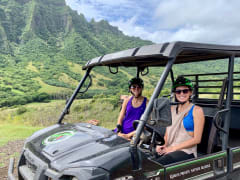
Jurassic Valley Kualoa Ranch ATV Raptor Adventure Tour
From usd 157.02.
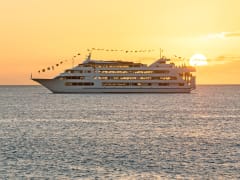
Star of Honolulu Sunset Dinner Cruise with Polynesian Show & Live Entertainment
From usd 105.30.

Captain Bob's Kaneohe Sandbar Snorkel & BBQ Lunch with Free Transportation
From usd 171.95.
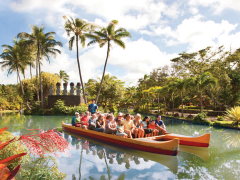
Polynesian Cultural Center Tour Ticket - Full Day Admission, Dinner & Show

Captain Bruce Kaneohe Sandbar Cruise with SUP, Guided Snorkel & Transportation
From usd 149.00.
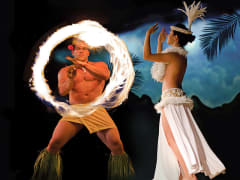
Hilton Waikiki Starlight Luau with Fire Dancers, Hula Show & Dinner Buffet
From usd 193.72.
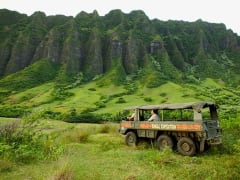
Kualoa Ranch Experience - Jurassic Valley Movie Tour, Jungle Jeep & Farm Tour
From usd 57.54.
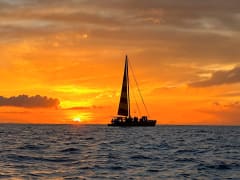
Waikiki Sunset Booze Cruise with 3 FREE Drinks - Ke Kai Catamaran
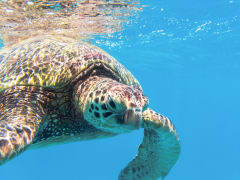
Waikiki Snorkel with Turtles Cruise with Beers & Cocktails - Ke Kai Catamaran
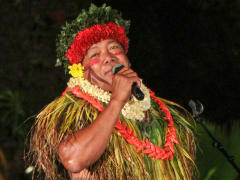
Chief's Luau - Polynesian Show with Authentic Award-Winning Fire Knife Dancing
From usd 140.00.

North Shore ATV Tour Beachfront Trail & Off-Road Adventure Ride
From usd 125.89.

Paradise Cove Luau on the Beach at Ko Olina Resort
From usd 150.00.

Hawaiian Parasailing Tour & Adventure from Waikiki Beach [800ft & 1000ft Lines]
From usd 78.99.
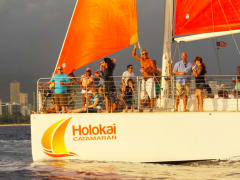
Waikiki Sunset Cocktail Sail with Open Bar Included - Holokai Catamaran
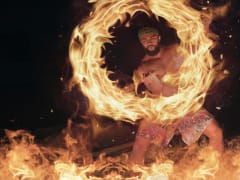
Mauka Warriors Luau - Hawaii's Best Thrilling Fire Knife Dance & Polynesian Show
From usd 130.99.
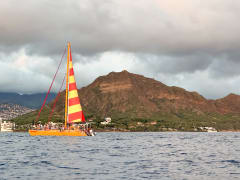
Na Hoku Catamaran Diamond Head Happy Hour Sail with Drinks Included from Waikiki
From usd 39.75.

Waikiki's Most Affordable Turtle Snorkel Boat Tour - Mana Kai Catamaran
From usd 68.06.

Kualoa Ranch Combo - Movie Tour & Kaneohe Bay Catamaran Cruise with Buffet Lunch
From usd 125.60.
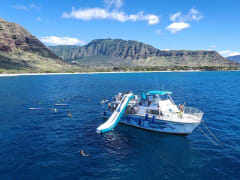
West Oahu Snorkel Cruise with Dolphin Watch, Kayak, SUP, Waterslide & Lunch
You may also be interested in, editor's picks for oahu.

Ultimate Guide for Thrills, Fun & Adventure
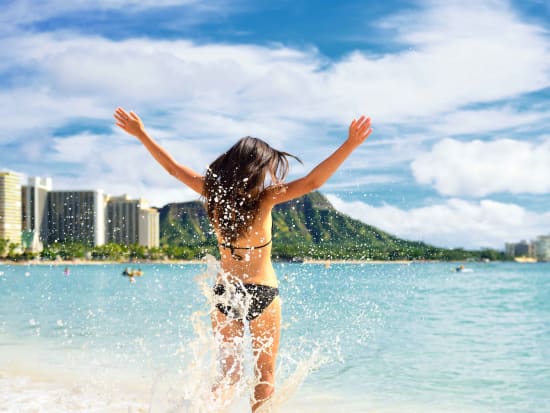
2024 Summer in Hawaii - Fun Things to Do on Oahu!
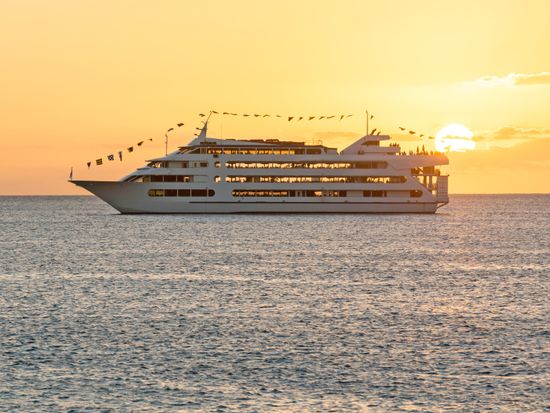
Romantic Things to Do in Oahu
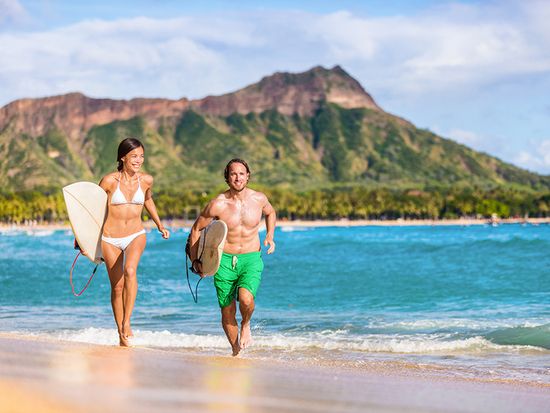
Hawaii's Bucket List - Best Things To Do on Oahu!
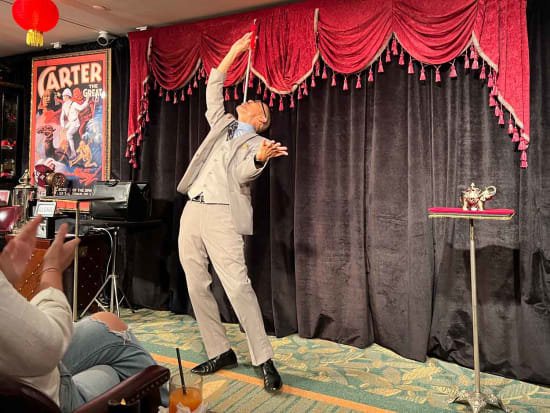
Check Out the Newest Tours & Activities on Oahu
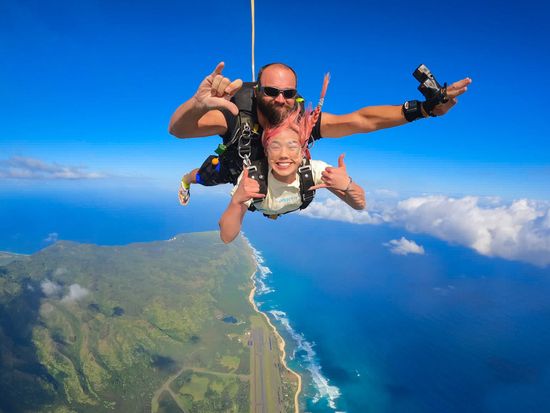
Oahu Top Adventures for Thrill Seekers
Traveler's photos.
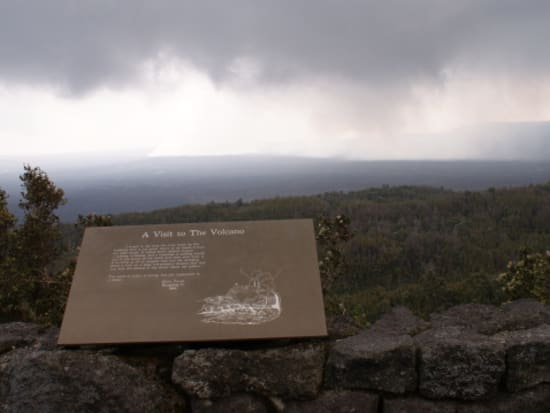
Latest reviews of Day Trips: Volcano Tours from Oahu
If not for the rain.
Our quide, Dexter was excellent. He was very thoughtful and professional. He made an otherwise rainy, gloomy day a fun day. The tour gave us a great overview.
Big Island Tour
Perfectly organised day, from communication prior to the day to everyone involved in sny part of the tour. The guide was great, hugely knowledgeable and interesting. The helicopter trip was perhaps the most incredible ... more thing I have ever done. The ground crew were superb and the pilot made it the best trip ever. After waiting 30 years to do this tour it didn't disappoint. Could not recommend it highly enough.
Good tour, but you can't schedule nature
The timings and organisation of the tour were good. We were picked up from the airport and taken to see the Volcano National Park sites with a good guide who kept us informed and was accommodating of our needs. Unfortuna ... more tely you can't schedule nature and we didn't see any volcanic activity apart from a little steam, but it was still interesting, especially the lava tube. We had a helicopter tour with Blue Hawaiian Helicopters to finish off with, but I will not review that part, I will review their admin however. We really wanted a copy of the video of our flight as it was for a 50th birthday, but due to a technical difficulty could not get it at the time. We were told to just drop them a line, but after several emails and calls, still nothing - very disappointed in them.
Dexter was a great guide with tons of information about not only the specific tour items but also the island and people in general. Rainy morning made volcano viewing tough but that’s Mother Nature. The helo tour of volc ... more anos in the afternoon more than made up for things!
Oahu to Big Island in a day
Glad we did it but it's expensive and a very long day. Up at 3:45 to get a taxi to the airport for a 6:00am flight. The tour said lunch included, neither we nor anyone else on the tour thought it would be a packet of ch ... more ips and a turkey wrap in a box on board the bus. It was. The tour locations were excellent, the volcano, lava tube, waterfalls were all spectacular. The guide was good.
Perfect Trip
This was an awesome tour. It went like clockwork and our tour guide, Ernie, was very knowledgeable of the island and took good care of us. I would highly recommend this tour.
Oahu's Other Categories
Day trips: volcano tours from oahu | book oahu tours, activities & things to do with hawaiiactivities.com.
- Hawaii Activities
- VELTRA Corporation
- Investor Relations
- News Release
- Supplier Sign-in
- Add Your Activity
- Travel Agent
- Affiliate Program
- Social Media Influencer
- Privacy Policy
- Terms & Conditions
- Hawaii Travel Guide
- Military & Kamaaina
- Groups & Private Charters


Diamond Head State Monument

- Diamond Head State Monument on Oahu, a volcanic tuff cone, emerged around 300,000 years ago, featuring a distinctive circular crater.
- The iconic hike to the summit takes visitors through historic tunnels and bunkers, offering panoramic views of Honolulu, Waikiki, and the Pacific Ocean.
- Built in the early 1900s, bunkers and observation stations at Diamond Head showcase its role in Oahu's military history.
Step into the extraordinary world of Diamond Head State Monument, an immersive experience on the radiant island of Oahu, Hawaii, where geological wonders, outdoor adventures, and historical treasures converge to create an unforgettable journey for every visitor.
Geological Marvels and Historical Intrigues
Diamond Head, known as "Leahi" in Hawaiian, stands as a testament to the island's volcanic origins, with its volcanic tuff cone formation dating back nearly 300,000 years. The name "Diamond Head" adds an element of mystery, a moniker bestowed by British sailors in the 19th century who, enchanted by calcite crystals, mistook them for diamonds. This misinterpretation only adds to the allure of this iconic landmark.
The Iconic Hike to the Summit
The jewel in Diamond Head's crown is undoubtedly the iconic hike to the summit, offering a journey through time and terrain. The trail winds through tunnels and bunkers constructed in the early 1900s, part of Oahu's coastal defense system. As you ascend, panoramic views unfold, revealing the sprawling landscapes from Honolulu to Waikiki, with the vast expanse of the Pacific Ocean stretching beyond.
The moderately challenging trek culminates at the summit, where the historic Fire Control Station stands proudly, a silent witness to the island's military legacy. This breathtaking vantage point provides an ideal setting for capturing the beauty of Oahu, making the hike a must-do for both adventure seekers and photography enthusiasts.
Visitor Facilities and Educational Offerings
To enhance your experience, Diamond Head State Monument provides visitor facilities, including an informative visitor center. Here, you can delve into educational programs and guided tours that unravel the mysteries of the crater's history, geology, and ecology. Gain deeper insights into the forces that shaped this geological wonder and the cultural significance embedded in its slopes.
Tips for Visitors
- Hiking Essentials: Wear comfortable hiking shoes, bring plenty of water, and consider a hat and sunscreen for sun protection.
- Trail Information: The trail to the summit is approximately 1.6 miles round trip. While it's moderately challenging, the stunning views make every step worthwhile.
- Visitor Center Hours: Check the visitor center's operating hours for the latest information on educational programs and guided tours.
- Conservation Awareness: Be mindful of the delicate ecosystem; stay on designated trails and respect the natural surroundings.
- Weather Considerations: Hawaii's weather can be unpredictable. It's advisable to check the weather forecast before your visit.
Preserving Nature and Culture
Beyond its geological and historical significance, Diamond Head serves as a sanctuary for biodiversity. Efforts are ongoing to preserve and protect the natural and cultural resources within the monument, ensuring that future generations can continue to explore and appreciate this captivating destination.
Diamond Head State Monument isn't just a destination; it's a living story waiting to be uncovered. Come, immerse yourself in the magic, and let this iconic landmark be the highlight of your Hawaiian adventure.
Diamond Head Rd Honolulu, HI 96815 (800) 464-2924
Sightseeing
ADA Accessible
Food (Concession)
Picnic Pavilion
Picnic Tables
Water Fountain
CREDIT CARD ONLY
Hawaii Residents = Free w/Hawaii ID or DL
Non-Hawaii Residents = $5
Children 3 and under = Free
Non-Commercial Vehicles
Resident = No Charge with ID
Non-Resident = $10 Per Vehicle
Commercial vehicles fees:
1-7 Passenger Vehicles = $25
8-25 Passenger Vehicles = $50
26+ Passenger Vehicles = $90
(NON-RESIDENT RESERVATIONS REQUIRED)
Other Hawai'i State Parks you may be interested in
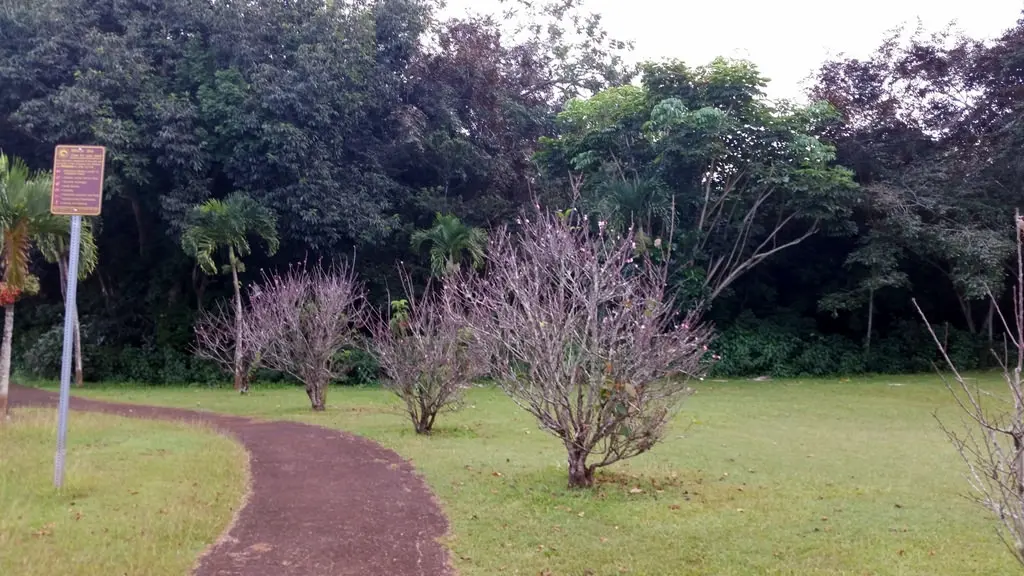
Wahiawa Freshwater State Recreation Area
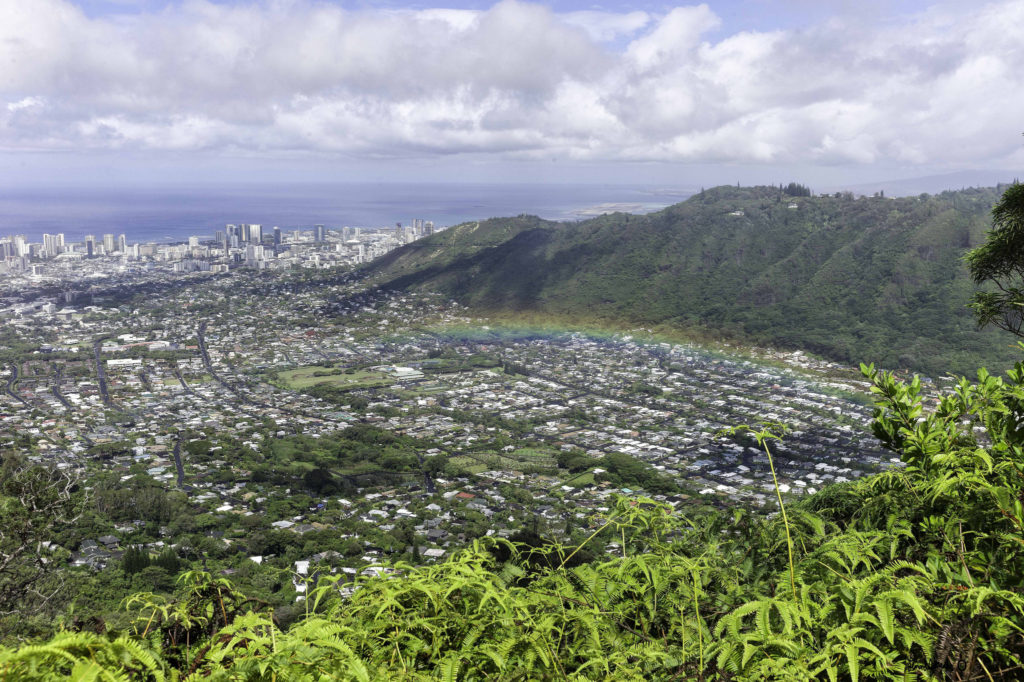
Waʻahila Ridge State Recreation Area
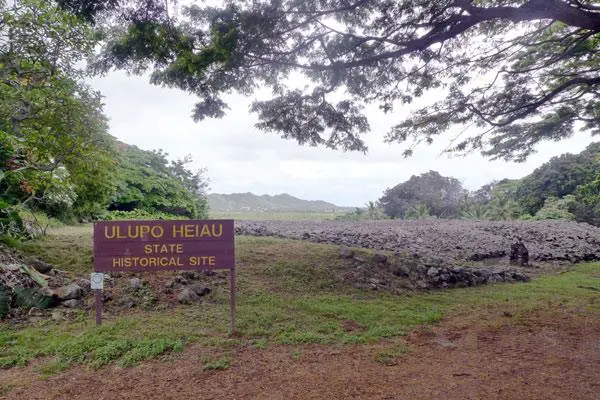
Ulupo Heiau State Historic Site
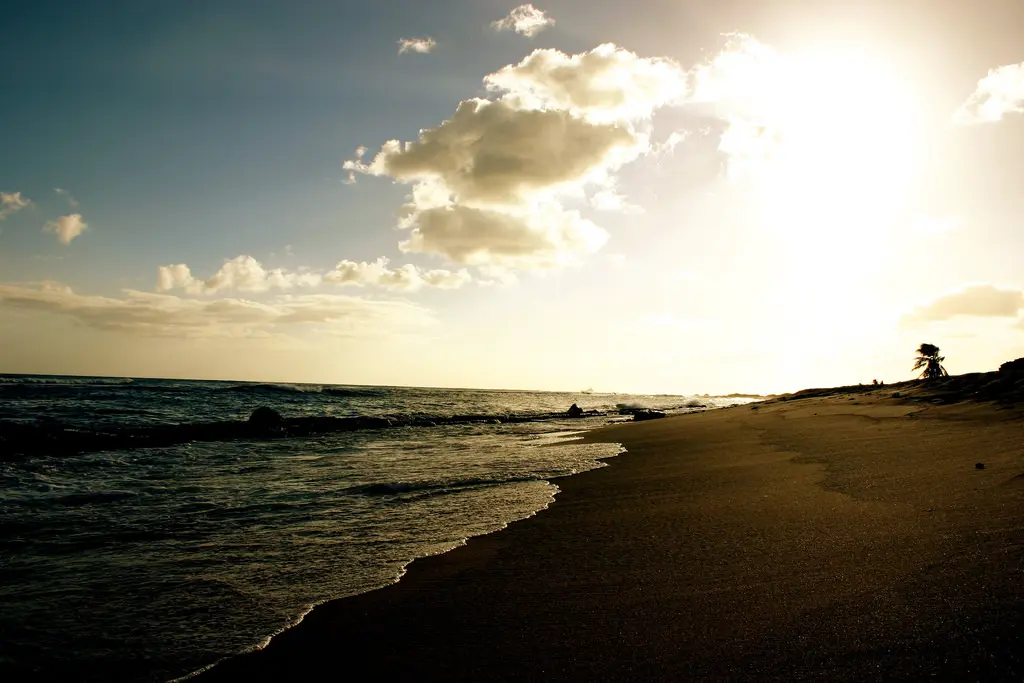
Sand Island State Recreation Area
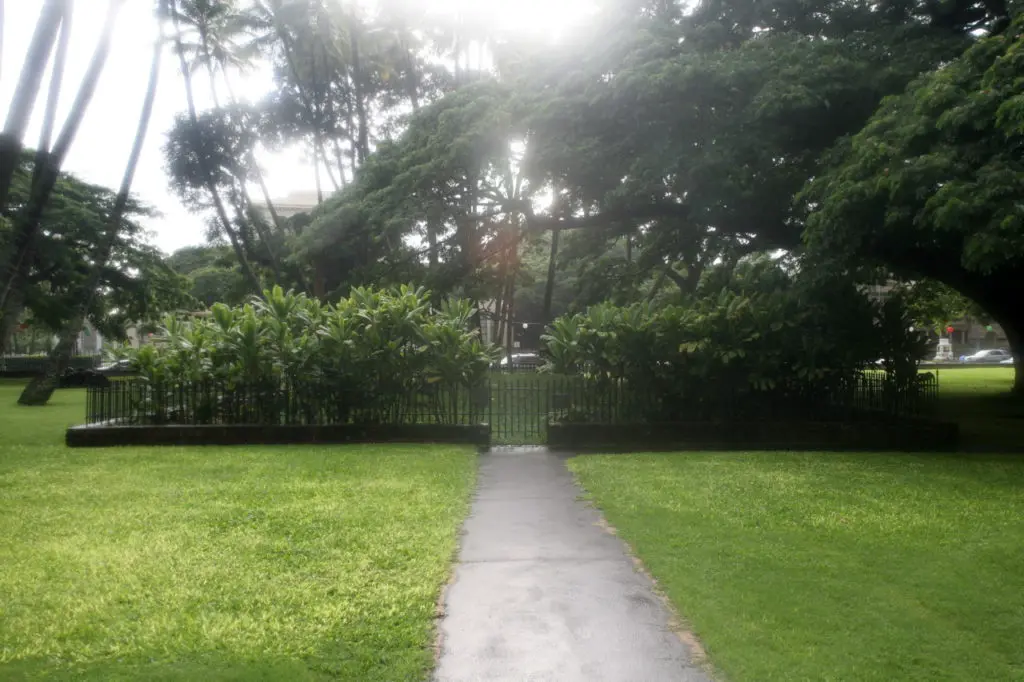
Royal Mausoleum State Monument

Queen Emma Summer Palace


- Oahu’s Top Rated
- All Kualoa Tours
- Kualoa Ranch Movie Site Tour
- Circle Island Tours
- Dinner Cruises
- Dolphin Excursions
- All Helicopter Tours
- Shoreline Flight
- Magnum P.I. Experience
- Photography Flight
- Northshore Horseback Riding
- Parasailing
- Pearl Harbor Tours
- Private Charters
- All Rock-A-Hula Packages
- Rockin’ Show
- Rockin’ Show & Luau Buffet
- Rockin’ VIP Package
- Shark Tours
- Snorkeling Tours
- Waikiki Trolley
- Zipline Tours
- Helicopter Tours
- Snorkel Tours
- Whale Watching Maui
- Historical Dinner Cruise to Kealakekua Bay
- Deluxe Snorkel & Dolphin Watch
- Super-Raft Snorkeling Experience
- Super-Raft Sunset Cruise
- Volcano Tours
- Whale Watching

- Planning Your Day Trip to Volcano National Park from Oahu, Hawaii

Taking a day trip to Volcano National Park from Oahu is an adventure of a lifetime.
This journey takes you right into the heart of Hawaii's geological wonders, where active volcanoes breathe life into unique ecosystems and cultural narratives.
A day trip to Volcano National Park from Oahu allows you to witness nature in its rawest form – it's not just about seeing lava flow or trekking across volcanic landscapes.
You also get the chance to immerse yourself in rich Hawaiian culture, learn about fascinating geology, and explore diverse flora and fauna that thrive amidst these fiery mountains.
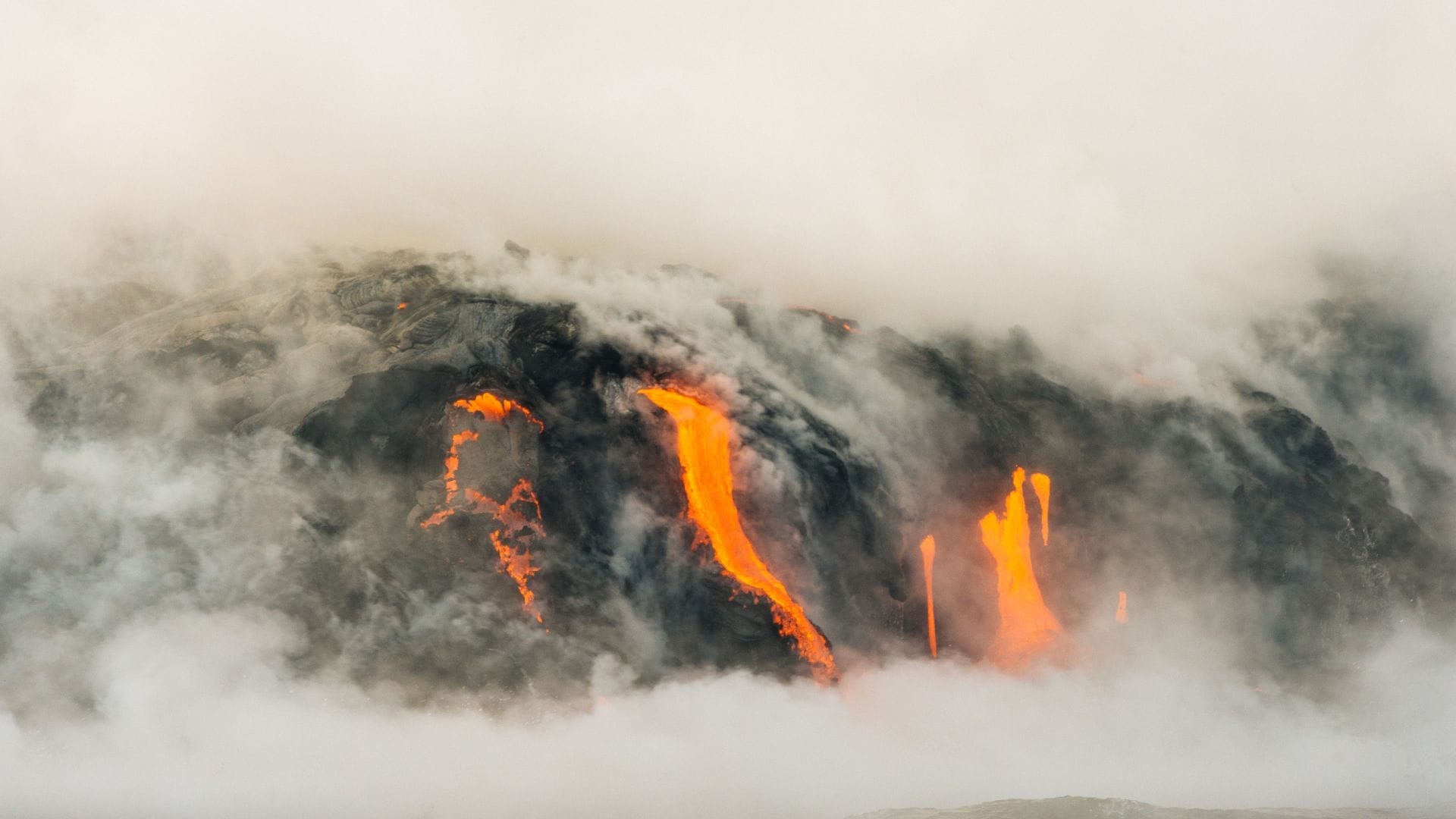
Volcano National Park in Oahu - Overview
Located just 3 hours away from Honolulu, this park offers everything from stunning landscapes to exciting hikes.
With its unique and diverse ecology, as well as numerous recreational activities such as camping and fishing, there's plenty to keep both young and old occupied here.
Get ready for an unforgettable day trip- we'll give you all your need to know about Volcano National Park in Oahu!

Is Volcano National Park in Oahu Worth Visiting?
Yes, it's definitely worth visit, as it's one of the most spectacular places on the island. From breathtaking hikes and ancient volcanoes to lush rainforests and unique geological formations.
This park offers visitors a chance to explore some of Earth's remote beauty and natural wonders.
Whether you're a nature-lover seeking challenging trails or are simply looking for peaceful solitude surrounded by unspoiled foliage, this breathtaking trip will be sure to impress and create lasting memories!
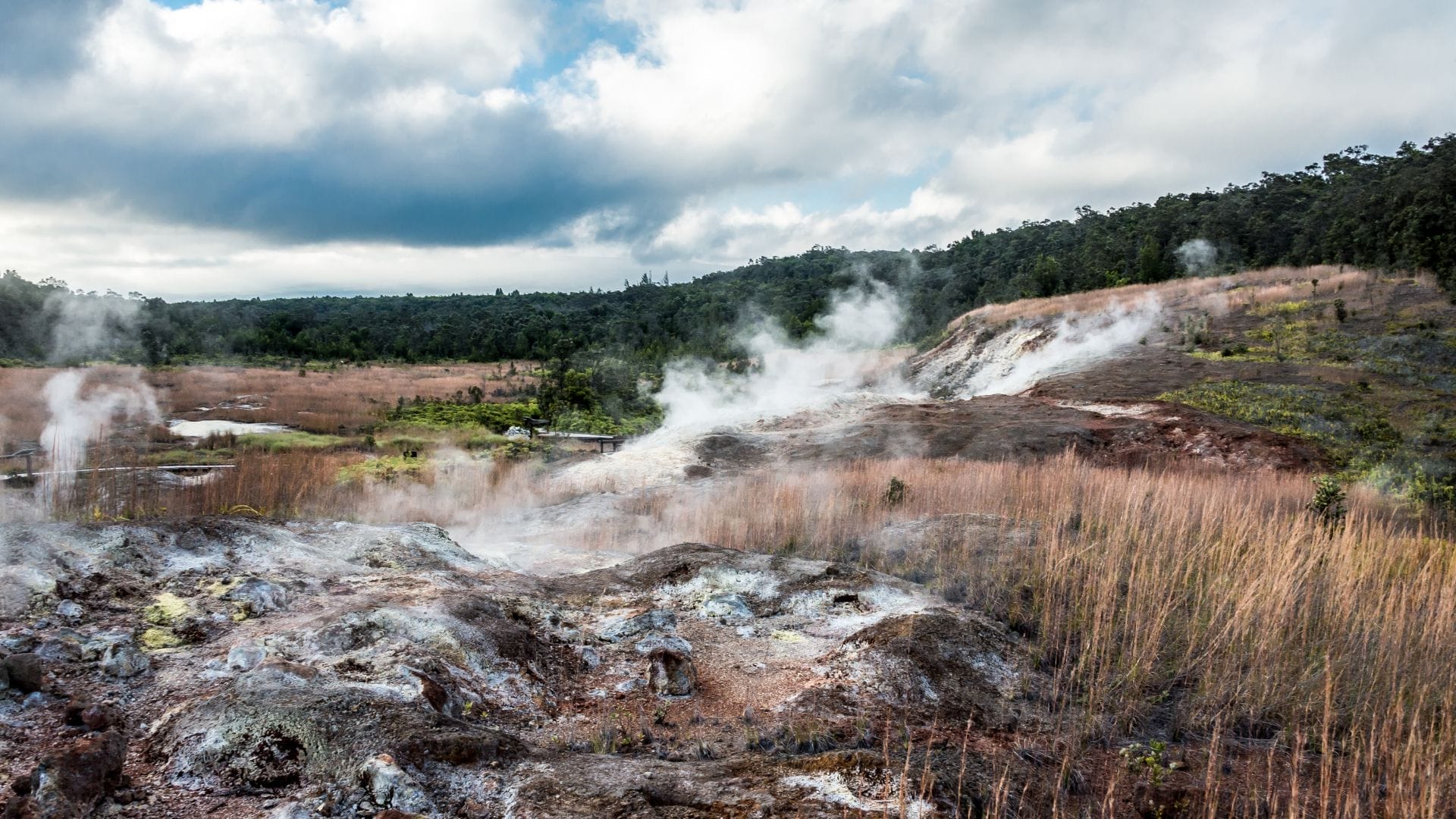
Hawaii Volcanoes National Park Opening Times
Hawai'i Volcanoes National Park is always open. You can visit any time you'd like, day or night, even on holidays.
If you're looking for the Kīlauea Visitor Center, simply head to Crater Rim Drive, and you'll see it on your right.
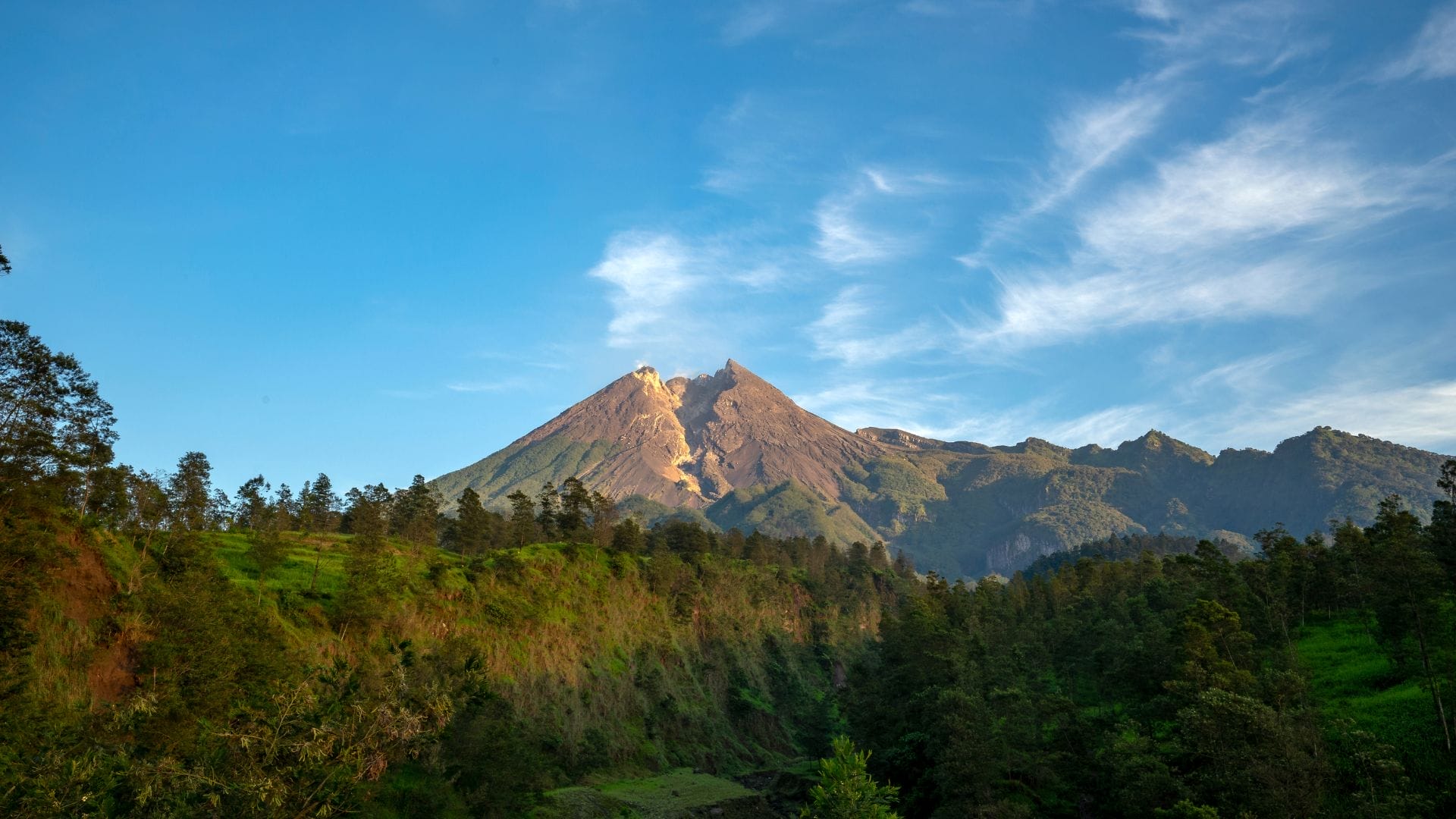
How to Get to Hawaii Volcanoes National Park?
There may not be a direct connection, there is a way to make the journey and it's simple enough.
Hop on the line 20 bus to Airport Upper Level and take a quick walk to the Honolulu airport. From there, fly to Hilo and, once on the Big Island, grab a taxi to the national park.
While it might not be the quickest route, the scenery is sure to make up for the extra travel time.

Best Trails in the National Park
Volcano National Park is the perfect place for your day trip! Filled with lush rainforests, billowing steam vents, dynamic volcanoes and even petroglyphs, this paradise will amaze and delight outdoors lovers.
From active hikes to easy strolls and everything in between, there is something for everyone at this incredible national park—come join us on a journey through some of its best trails!
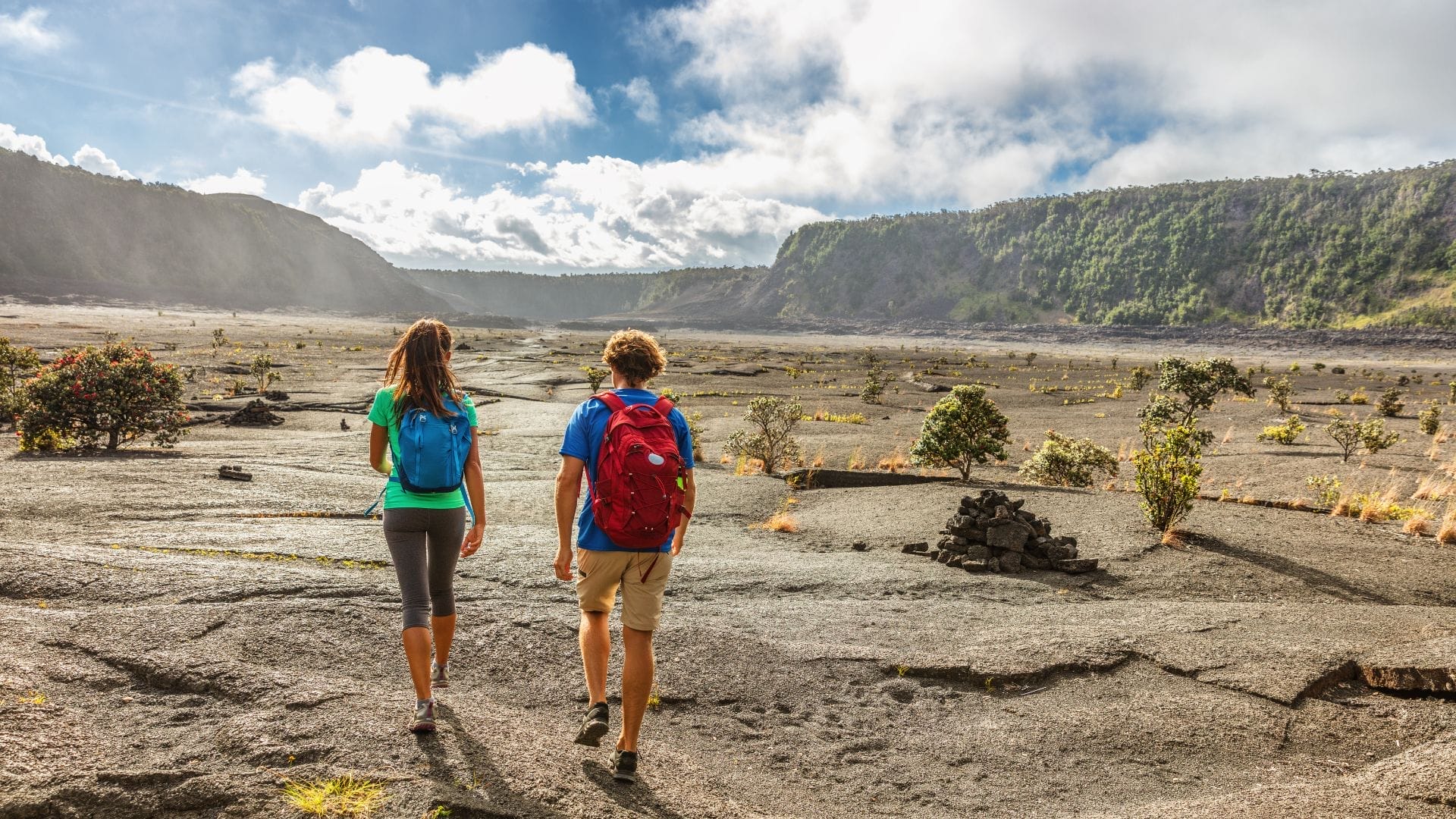
Kilauea Iki Trail and Crater Rim Trail
The Kilauea Iki Trail and Crater Rim Trail are some of the best trails in Oahu and it must be on your bucket list. The Kilauea Iki Trail stretches over four miles, and you can expect to take about two to three hours to complete it.
The trail is not too strenuous, with a few inclines and some uneven terrain, but the views of the volcanic landscape and the steam vents will make it worth the effort.
After completing the Kilauea Iki Trail, you can move on to the Crater Rim Trail. The Crater Rim Trail offers sweeping views of the Kilauea caldera and stretches eight miles around it.
However, you can choose to do a shorter version of the Crater Rim Trail if you'd like.
The Kilauea Iki Trail and Crater Rim Trail are perfect for hikers of all levels who love unique scenery and a bit of adventure.
Key-Takeaway
The Kilauea Iki Trail and Crater Rim Trail offer a unique and adventurous hiking experience for all levels of hikers, with breathtaking views of the volcanic landscape.
Halema’uma’u Steam Bluff and Sulfur Banks
The Halema’uma’u Steam Bluff and Sulfur Banks trail isn't the most challenging hike in the park, it's still a great opportunity to stretch your legs and get some fresh air.
The trail takes about 45 minutes to an hour to complete and covers a distance of only about 1.5 miles, so you can easily fit it into your day.
At the end of the trail, you'll be rewarded with an awe-inspiring view of the Halema’uma’u Steam Bluff and Sulfur Banks, two of the park's most unique and fascinating geological features.
The Halema’uma’u Steam Bluff and Sulfur Banks trail is a fun, easy hike that takes around an hour to complete, offering breathtaking views of two of the park's most unique geological features.

Crater Rim Drive to Keanakākoʻi Overlook
This trek boasts stunning views of the island's volcanic landscape, making it a must-see for any outdoorsy traveler.
While the distance of the trail may vary based on your starting point, the hike is generally around 1.5 miles long and is a moderate difficulty level.
You will be surprised with the beautiful scenery along the way makes the journey completely worth it.
Plan for around an hour to complete the hike, but this can vary depending on your pace and photo-taking breaks.
Strap on your hiking boots and explore the island's volcanic landscape with an hour-long moderate hike to Keanakākoʻi Overlook for breathtaking views!
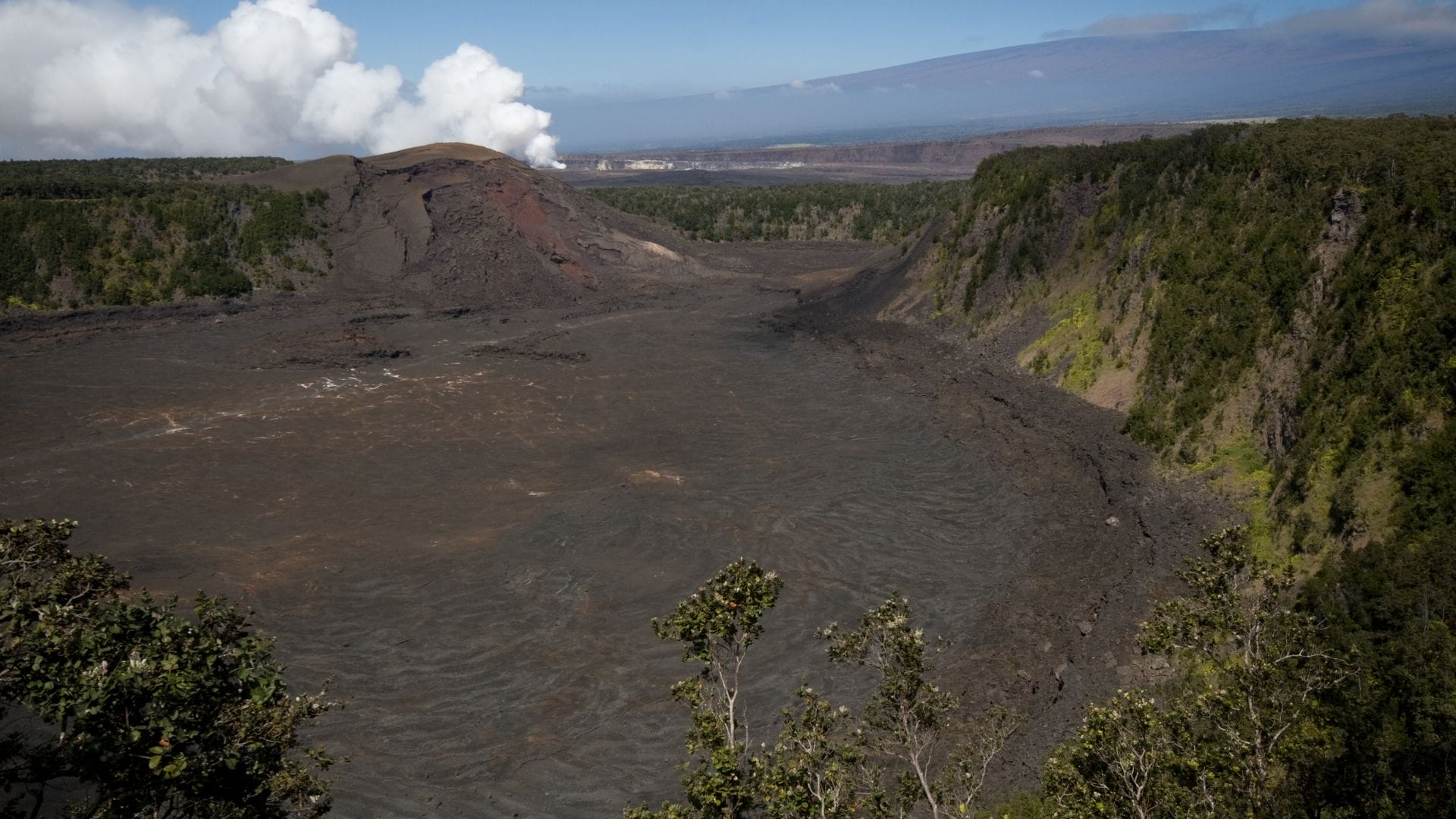
Discover Hawaii Volcanoes National Park
Hawaii Volcanoes National Park is a natural marvel, boasting two of the planet's most active volcanoes - Kilauea and Mauna Loa.
The park offers visitors an unrivaled opportunity to observe geological wonders in real-time. Situated on Hawaii's Big Island, this expansive national treasure spans over 333,000 acres from sea level to Mauna Loa's peak at 13,677 feet.
With its unique blend of volcanic craters and lava tubes alongside lush rainforests teeming with native species, it serves as an extraordinary educational platform for those fascinated by geology or nature. The Hawaii Volcanoes National Park, open around-the-clock all year round, provides flexibility for exploration anytime you desire.
However, due to its location on the windward side of the island receiving approximately 200 inches of rainfall annually, anticipate some rainy weather during your visit.
Hawaii Volcanoes National Park offers an incredible opportunity to experience geological wonders and native species in a lush rainforest environment, open 24/7.
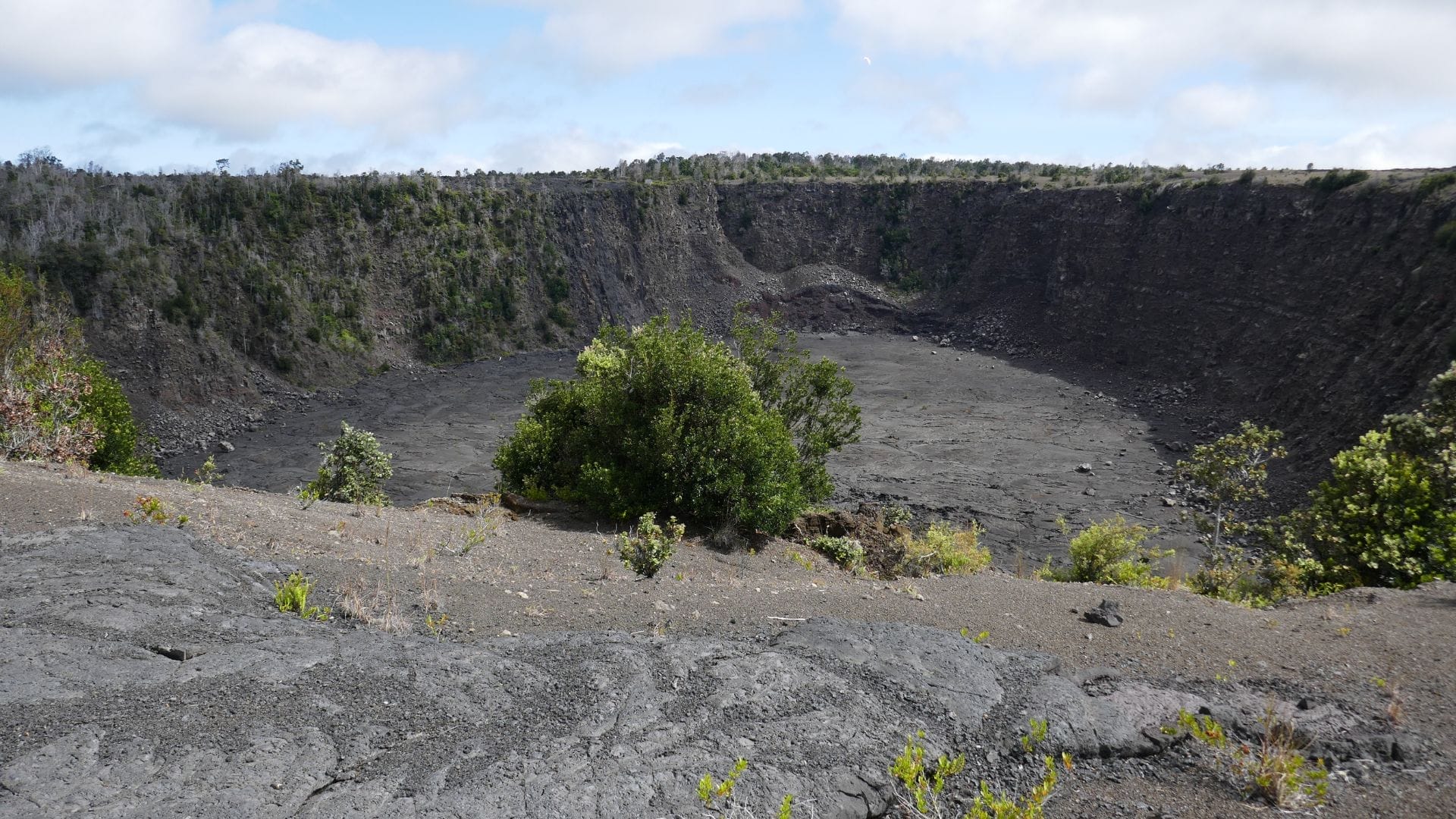
Diverse Ecosystems
The National Park is a haven for diverse ecosystems, from tropical rainforests at the lower elevations to subalpine woodlands higher up, which provide habitat for various endemic species such as Hawaiian honeycreepers and happy-face spiders.
These varied habitats are home to numerous endemic creatures such as Hawaiian honeycreepers (birds) and happy-face spiders (insects). In addition to these fascinating wildlife encounters along trails or guided tours, there are several rare plants like ohia lehua trees known for their bright red flowers which bloom even amidst fresh lava fields.
The National Park offers a variety of unique ecosystems and wildlife, including Hawaiian honeycreepers, happy-face spiders, and ohia lehua trees with bright red flowers.

Experience Cultural Significance
One day in Volcano National Park is all it takes to experience the cultural significance that this breathtaking site has to offer.
From Oahu, you can take a quick flight or ferry over to the Big Island and spend the day exploring the diverse landscapes and ancient traditions that this park has preserved for centuries.
From the commanding sight of Mauna Loa and the active Kilauea volcano, to the rich Hawaiian folklore that surrounds this sacred land, your senses will be awakened by the beauty and history of this extraordinary place.
Don't just take our word for it, come see for yourself and take home a memory that will last forever!
Spend a day in Volcano National Park to explore the diverse landscapes, active volcanoes, and Hawaiian folklore, and create memories that will last a lifetime.

Planning Your Day Trip to Volcano National Park from Oahu
The first step is to secure your transportation, as regular flights and ferries are operating between Honolulu on Oahu and Hilo or Kona on the Big Island.
We recommend renting a car and coming to the national park from the Big Island's airport, as it's more convenient and the price will be very similar.
Of course, reserving a rental car in advance is highly recommended, especially during the summer months.

Best Time to Visit
Volcano National Park welcomes visitors throughout the year, but each season offers unique attributes that are worth considering when planning your trip.
Spring often brings ideal weather conditions and fewer tourists, providing ample opportunities for uninterrupted exploration. The rainy seasons, from November to March, can result in lush landscapes.
However, be aware that muddy trails and sporadic road closures due to flooding are possible during these months.
Spring is the ideal time to visit Volcano National Park for its pleasant weather and lack of crowds, while the rainy season offers lush landscapes and unique experiences.
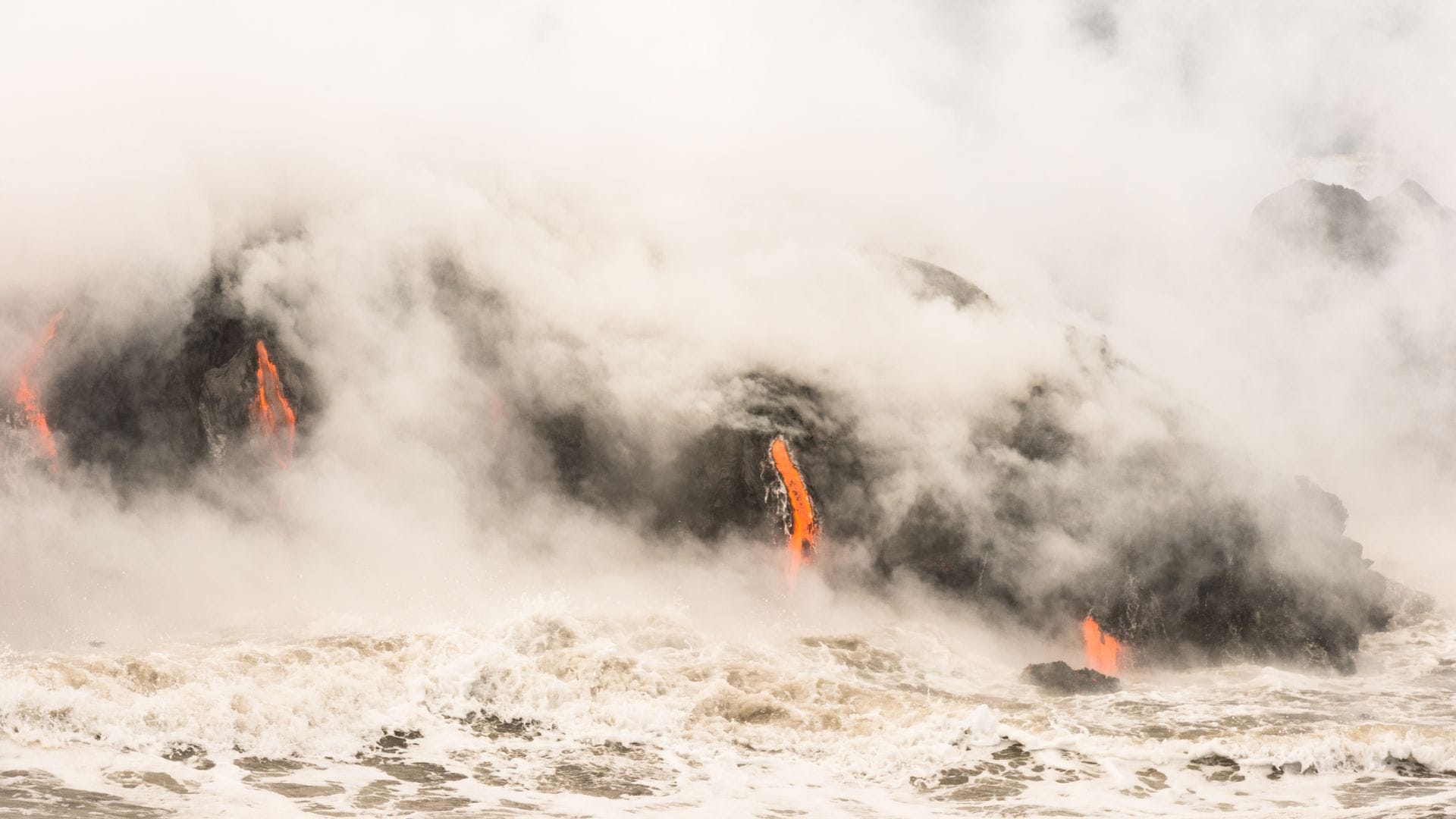
Safety Tips for a Day Trip to Volcano National Park From Oahu
Stick to trails and roads that are marked and open and do not enter areas that have been closed.
Stay clear of cliffs, cracks, and steam vents as they may collapse or be slippery. Keep your feet comfortable by wearing sturdy close-toed shoes as hiking on lava rock can be unpredictable.
Remember to put on sunscreen, a hat, and sunglasses since lava fields are hot and shadeless.
Also, keep yourself hydrated by bringing at least two quarts of drinking water per person. Along the coast, be prepared for strong winds, steep cliffs, high waves, and unpredictable surf.
Always hike and travel with at least one other person and let someone know where you plan to visit. Lastly, know your limits and do not put yourself in any avoidable danger.
When exploring, always wear protective clothing, bring lots of water, travel with a companion, and be mindful of potential risks to ensure a safe and enjoyable experience.

Potential Hazards in the Park
The two active volcanoes - Kilauea and Mauna Loa are breathtaking sights, yet they present certain risks due to their volatile nature.
The volcanic gases like sulfur dioxide can be harmful, especially for people with respiratory issues. Stay updated about current volcano conditions before venturing out. Besides this, recent lava flows or seismic activities might cause ground instability in some areas within the park.
To avoid any danger, stick strictly to marked trails and pay attention to warning signs set up by park officials.
Visiting Hawaii's active volcanoes Kilauea and Mauna Loa can be a breathtaking experience, but visitors should take caution by staying on marked trails and following official warnings.

Be Prepared for Emergencies
Last but definitely not least: Be prepared. Carry basic first aid supplies along with enough food and water supply per person during your trip.
A map of the area, although it may seem outdated considering the availability of digital maps today, could turn out invaluable in case mobile devices run low on battery life.
Be prepared for your trip by packing basic first aid supplies, food and water, and a map of the area to ensure you are ready for any situation.
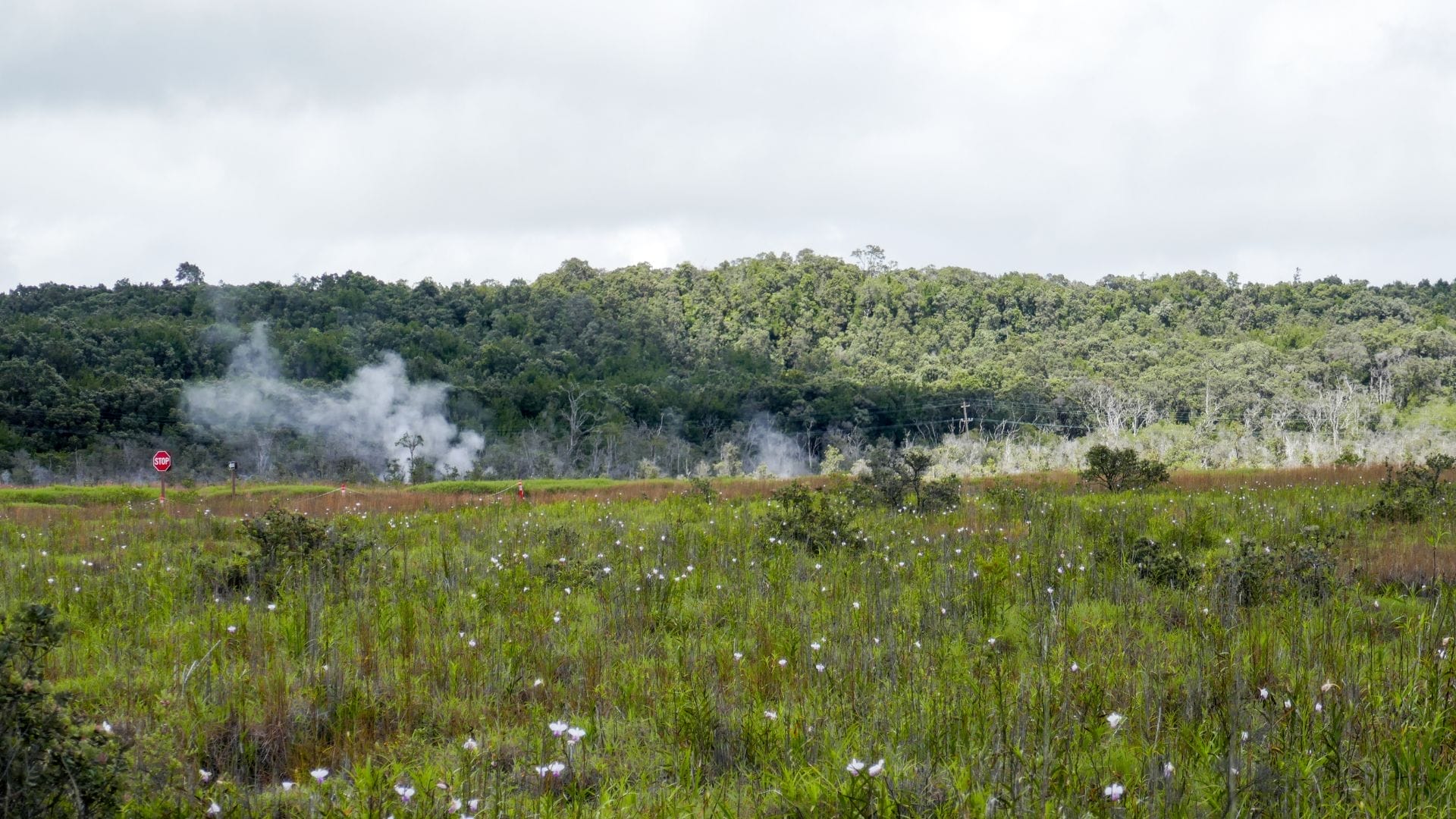
Supporting Conservation Efforts
Considering a trip to Volcano National Park on the Big Island. Not only will you be treated to stunning landscapes and the thrill of an active volcano, but you'll also be supporting conservation efforts.
By paying the park entrance fee, you're helping to preserve one of Hawaii's most unique natural wonders.
And if you really want to do your part, consider participating in a volunteer program or donating to the park's nonprofit partner, the Hawaii Volcanoes National Park Conservancy.

The Role of Leave No Trace Principles
Leave No Trace principles are not just guidelines but rather ethical obligations that help minimize human impact while enjoying outdoor activities.
These seven principles include preparing ahead, sticking to durable surfaces when traveling or camping, disposing of waste properly, leaving nature undisturbed by taking only photographs and memories with you, minimizing campfire impacts if applicable, respecting wildlife from a distance without altering their behaviors in any way, and being considerate toward other visitors. This will protect the park's delicate ecosystems while also fostering an appreciation for its fragile beauty.
By following the Leave No Trace principles, outdoor activities can be enjoyed while still respecting and protecting nature's delicate ecosystems.
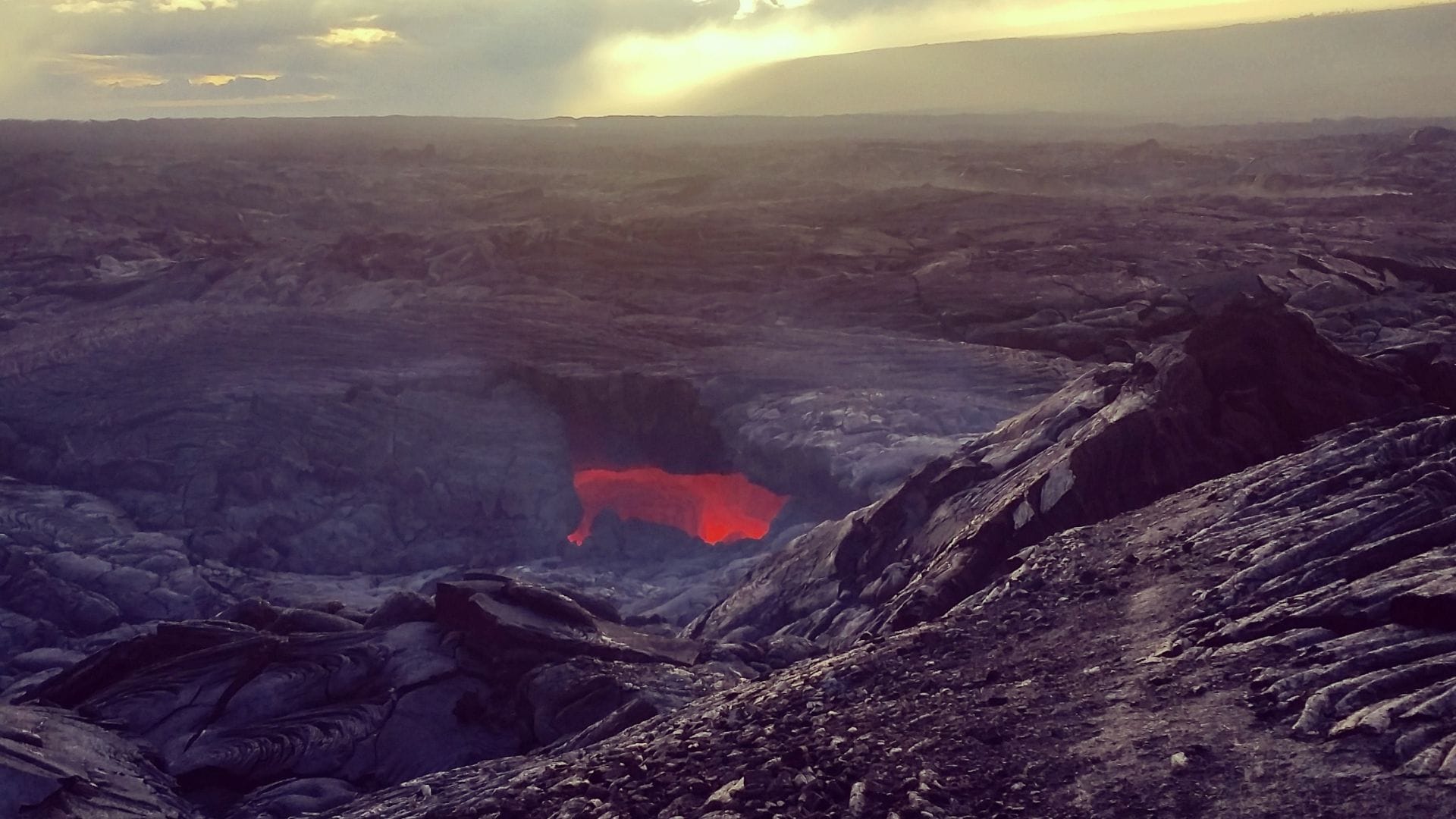
Conclusion:
All in all, a day trip to the beautiful and grand Volcano National Park is absolutely worth it from Oahu.
Whether you decide to drive or take a bus, this natural wonder of Hawaii will bring much joy and pleasure.
Moreover, because you only have one day, you can plan your trip by checking out the maps and making sure that you’ll be able to go around and see what you want in a timely manner.
To conclude, this is one of the best places to visit from Oahu, and we couldn't recommend it enough!
Frequently Asked Questions
How do i get from oahu to volcano national park.
You can travel from Oahu to Hawaii Volcanoes National Park by booking a flight or ferry service from Honolulu to Hawaii's Big Island.
Renting a car is recommended for exploring the park conveniently.
How much time should I spend at Volcano National Park?
A full day trip is usually enough to explore the main highlights of Hawaii Volcanoes National Park, including Kilauea and Mauna Loa volcanoes.
Can you do a volcano tour from Honolulu?
Yes, there are numerous tours available that offer round-trip transportation and guided experiences in Hawaii Volcanoes National Park starting from Honolulu.
What time of day is best for visiting Volcano National Park?
The park is open 24 hours but early morning or late afternoon visits is better for cooler temperatures and see fewer crowds.
What should I wear to volcano National Park?
At 4,000 feet, the summit of Kīlauea can be pretty chilly no matter what time you visit. Make sure to pack a rain jacket and wear long pants.
Not to mention, a sturdy pair of closed-toe shoes will keep your feet comfortable and protected on your journey. A hat, sunscreen, and a water bottle are also essential to make the most of your trip.
Real Hawaii Tours
Free oahu e-guide.

First-timer’s guide to Hawaiʻi Volcanoes National Park

Apr 18, 2024 • 11 min read
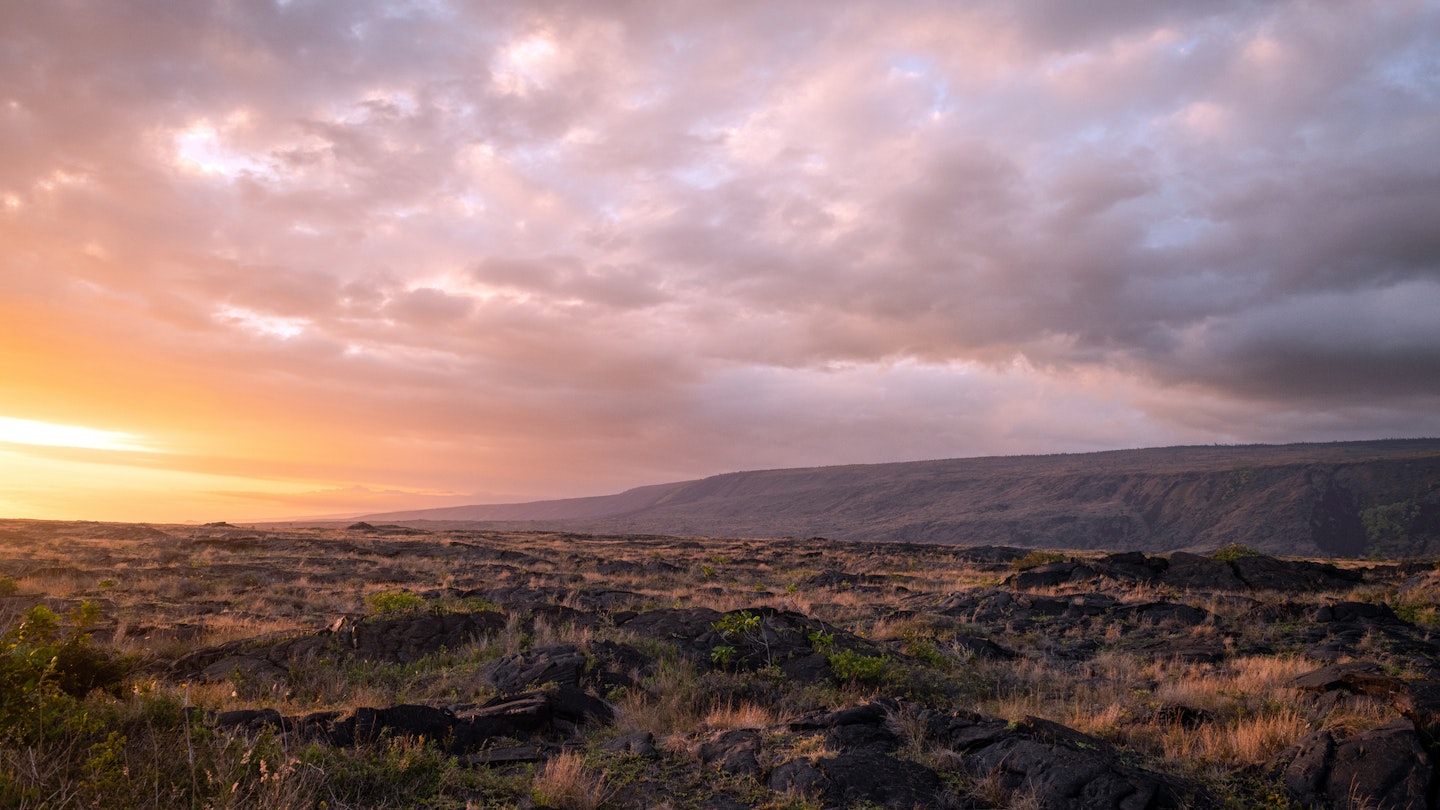
The scale and ferocity of Hawaiʻi Volcanoes National Park is a wonder to experience © Yiming Chen / Getty Images
Unsurprisingly, Hawaiʻi Volcanoes National Park on Hawaiʻi Island is one of the state’s most popular attractions.
This incredible landscape is home to two massive volcanoes – Kīlauea being one of the world’s most active – and stretches from sea level to the summit of Mauna Loa, one of the world’s largest. Sprawling across 333,259 acres on the island's southeastern side, the park is one of the most dynamic and diverse in the US.
Its ever-changing landscape boasts an assortment of terrain, from lush rainforests and barren lava fields to a volcano often dusted with snow every winter. Yes, even in Hawaiʻi!
So grab those hiking boots and binoculars and use our insider guide to get the most out of your first trip to this unique national park.
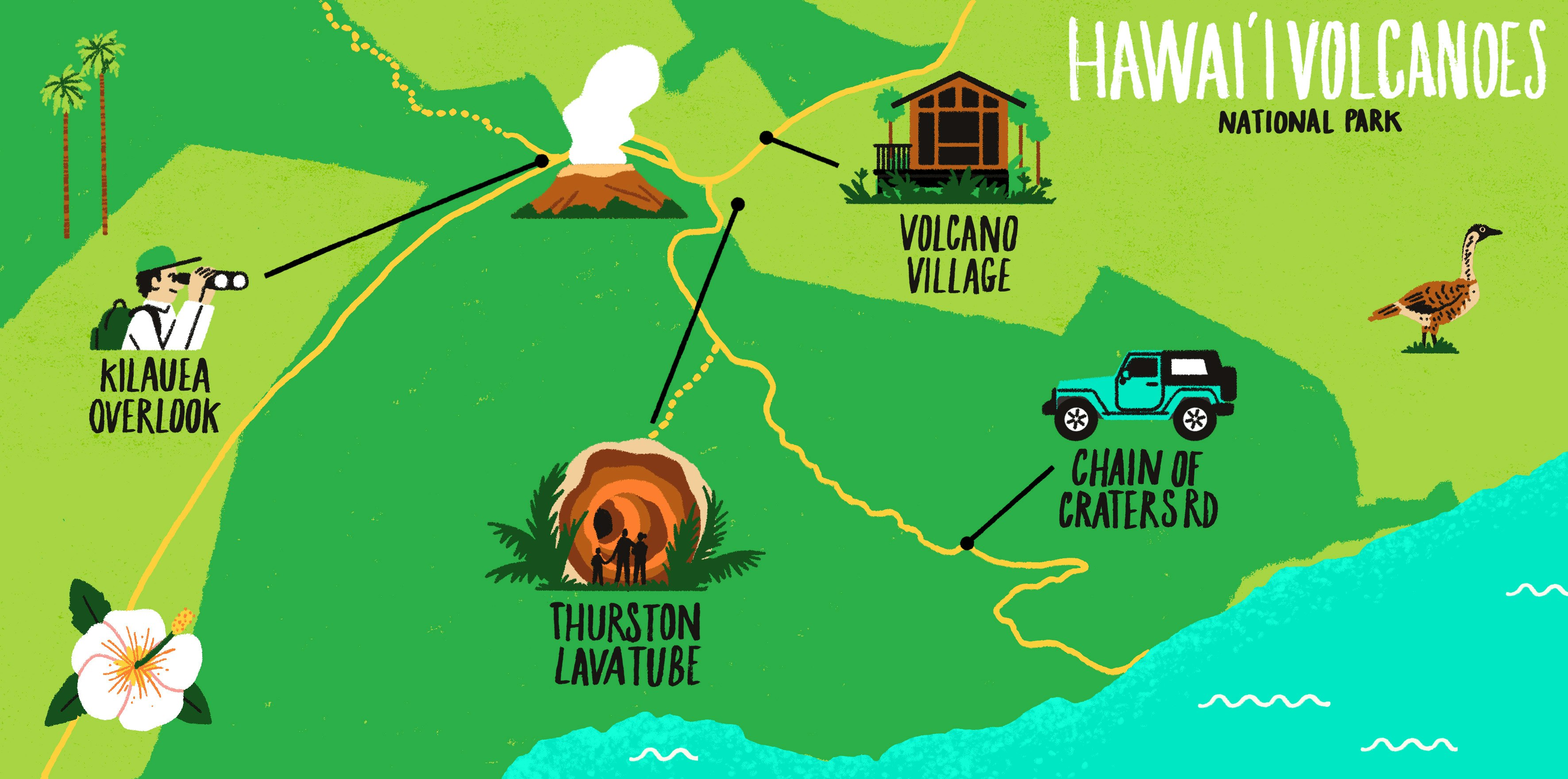
When is the best time to visit Hawai‘i Volcanoes National Park?
There isn’t an especially bad time to visit the park, which sees nearly two million visitors annually. The weather on the Islands doesn’t vary much, with temperatures fluctuating between 66-85°F throughout the year. Winter and early spring, though, tend to be rainier and cooler than other times of the year and hurricane season runs from June to November, which can mean tropical storms, whipping winds and torrential rain.
The busiest travel seasons in Hawaiʻi are summer and winter – summer is peak vacation time for families and winter lures travelers eager to escape colder climes. Expect more people on trails and longer waits for parking during these periods.
Spring and fall are slower travel months and ideal times to visit the park. Trekking conditions are much more comfortable without the intense summer heat and you’ll likely find better airfare prices and hotel rates at nearby hotels. The park does get a surge of visitors during spring break and around the weekend of the annual Merrie Monarch Festival , a week-long hula competition based in Hilo around late March or early April.
Tuesday is the busiest day at the park – pick another day if at all possible. This is when the Pride of America , a cruise ship that sails around the Islands, docks in Hilo. Many of its 2000 passengers head to the national park, hitting popular stops like the Kīlauea Visitor Center , the Kīlauea Iki Trail , and Nāhuku (otherwise known as Thurston Lava Tube ). Winter brings yet more cruise ships to Hawaiʻi Island as thousands of North Pacific humpback whales migrate annually from Alaska to the warmer waters surrounding the Islands.
Though Kīlauea stopped erupting on Sept 16, 2023, the volcano still attracts visitors despite no visible lava fountains or flows. And it’s likely it will erupt again – the Puʻuʻōʻō eruption, which began in 1983 and lasted 35 years, ranks as the longest and most voluminous known outpouring of lava from Kīlauea’s east rift zone in more than 500 years. “If there is an eruption,” says Jessica Ferracane, the park’s spokesperson, “it is busy all day, every day, especially if it’s at the summit of Kīlauea.”
Planning tip: The park is currently undergoing a big disaster recovery project following the 2018 Kīlauea eruption and summit collapse. There could be temporary area closures, lane closures, reduced parking and other limited services for the next two years. Check the park website to check for construction closures and delays .
Find out everything you need to know about what's happening in Hawaii throughout the year in our guide to the best time to visit the Aloha State
How much time should I plan to spend at the park?
Hawaiʻi Volcanoes National Park may not be as huge as Alaska’s 13.2-million-acre Wrangell-St. Elias National Park & Preserve – larger than Yellowstone National Park, Yosemite National Park and Switzerland combined – but it does stretch from sea level to the summit of 13,681-ft Mauna Loa and across seven different ecological zones. You’ll need at least a full day to explore all the best parts of the park but two days are even better.
Park staff recommend that visitors arrive by sunrise to hit the park’s most popular trails first – it's open 24 hours to allow everyone to maximize their time. Dusk is also a wonderful time to go exploring – the lack of light pollution provides dark skies that are perfect for stargazing.
There are a variety of hikes within the national park, from the easy 1.2-mile Kīpukapuaulu Trail to the challenging backcountry treks up Mauna Loa that can take two days. And having an extra day means you can visit the park’s quieter and less crowded Kahuku Unit on the southerly slopes of Mauna Loa. This 116,000-acre former ranchland is about an hour's drive from the Kīlauea Visitor Center and is open to the public five days a week. You can hike to the top of an old cinder cone, trek through a pristine Hawaiian rainforest or bike through scenic pastures with panoramic views of the ranchlands.
The tiny town of Volcano Village just outside the park is also well worth a visit, with its laid-back eateries and food trucks, art galleries, and a vineyard and winery .
Is it easy to get in and around the park?
The nearest airport is Hilo International, about 30 miles northeast of the park (you can fly into the Ellison Onizuka Kona International Airport at Keāhole, but the drive from Kailua-Kona will take about two hours). Getting to the park from Hilo is easy – take Route 11 (Hawaiʻi Belt Road) west until you reach the main entrance. The drive takes about 45 minutes.
Hele-On Bus is the island’s only public bus service, operated by Hawaiʻi County. The No. 11 Red Line runs between Hilo and Hawaiʻi Volcanoes National Park, stopping daily at the Kīlauea Visitor Center. The bus schedule is subject to change, so check ahead. There is no public transportation or shuttle service within the park, so you’ll need a car to get around.

Top things to do at Hawaiʻi Volcanoes National Park
Kīlauea iki trail.
One of the most popular hikes in Hawaiʻi Volcanoes National Park is the 4-mile roundtrip Kīlauea Iki Trail. The terrain is varied – it starts in a forest of native ʻōhiʻa trees and hapuʻu (Hawaiian tree fern) and ends with a walk across an otherworldly crater floor – and it’s short enough to complete in a few hours, giving you plenty of time to visit other parts of the park.
The trailhead is at an overlook of the crater formed from an eruption in 1959 that was marked by fountaining lava over a half-mile long and a plume reaching a world-record 1900ft high. The first part of the trail is a descent through a lush rainforest lined with native ʻōhiʻa and koa trees. Look for the white-rumped ʻapapanae , a nectarivorous Hawaiian honeycreeper, often found flitting from tree to tree. The switchbacks end at the crater floor, a vast moonscape that sharply contrasts with the surrounding native forests.
This lava tube – also known as Thurston Lava Tube – was created by a river of 2000°F (1093°C) molten lava about 500 years ago. Discovered in 1913, this massive lava cave is very accessible, with a flat rock floor and ceiling height of more than 20ft in places. Electric lights illuminate most of the path, though you may want to bring a flashlight – it takes about 20 minutes to stroll through the tube. The rainforest that surrounds Nāhuku is brimming with native birds, including the scarlet ʻiʻiwi , a Hawaiian honeycreeper listed as threatened under the Endangered Species Act.
Hōlei Sea Arch
At the end of the Chain of Craters Road – about 18 miles from the Kīlauea Visitor Center – is the Hōlei Sea Arch , a 90-ft-tall rock formation cut into the cliff of an ancient lava flow about 550 years ago. In 2020, the park opened a new viewing area about 1000ft past the gate at the end of the road and set back away from the cliff edge.
Puʻuloa Petroglyphs
There’s an area of Pānau Nui on the southern flank of Kīlauea with numerous pecked images, or petroglyphs, in the hardened lava. Puʻuloa, which translates to “long hill” in ʻōlelo Hawaiʻi (the Hawaiian language), is a sacred place to Native Hawaiians. The archaeological site here boasts more than 23,000 petroglyphs – the largest collection in Hawaiʻi – with motifs of circles, canoe sails, human forms, feathered capes and other geometric shapes.
Devastation Trail
This half-mile hike is suitable for everyone as it's wheelchair and stroller accessible. The paved path meanders through a stark yet beautiful landscape buried by falling cinder from lava fountains of the 1959 Kīlauea Iki eruption. You might find volcanic debris in the form of glass-like droplets and strands called Pele’s Tears and Pele’s Hair, respectively, named after the revered Hawaiian goddess of fire and volcanoes. Nēnē (Hawaiian geese) frequent this area; refrain from feeding or interacting with this threatened species.

My favorite thing to do at Hawaiʻi Volcanoes National Park
Unfortunately, there aren’t many places in Hawaiʻi where you find native forest birds anymore. Their populations have plummeted due to habitat destruction, predators like feral cats, mongoose and non-native mosquitoes that spread avian pox and avian malaria.
But at Hawaiʻi Volcanoes National Park, where native habitats are protected and able to thrive, you can see – and hear – a variety of these special birds, from the friendly ʻelepaio (Hawaiian flycatcher) to the elusive ʻōmaʻo (Hawaiian thrush), which can only be found in the montane rainforests on Hawaiʻi Island. The bright orange ʻākepa , an endangered Hawaiian honeycreeper with an odd-shaped beak, can be spotted in the high-elevation forests of the park’s Kahuku Unit. And if you’re lucky, you might catch a glimpse of the endemic ʻio , the only hawk species native to Hawaiʻi.
I love wandering along the 1.2-mile Kīpukapuaulu Trail, an easy loop through pristine native forestland in an area known as a “bird park.” A kīpuka is an area of land that’s surrounded by younger lava flows, like an “island” within a sea of lava. There are more native tree species per acre here than any other forest in the national park, which means you’ll find native forest birds that rely on the native trees that grow here.
How much money do I need?
Park entry costs $30 for a private car, $25 for a motorcycle, and $15 for pedestrians and cyclists. The park has gone cashless, so payment has to be made with debit or credit cards in person or online .
If you're also planning to visit Puʻuhonua o Hōnaunau National Historical Park near Kailua-Kona or Haleakalā National Park on Maui, consider buying the Hawaiʻi Tri-Park Annual Pass for $55. This allows you to enter all three of these parks in a single, private vehicle.
The National Park Service offers free admission to everyone on the following days: Martin Luther King Jr. Day, the first day of National Park Week in April, Juneteenth, the Great American Outdoors Act, National Public Lands Day and Veterans Day.
Average costs at Hawaiʻi Volcanoes National Park
- Basic room for two at Volcano House: $80 to $385 per night
- Airbnb in Volcano: $150 average per night
- Cup of coffee: $3.50
- Midrange meal: $15-$20 per person
- Local beer: $10
- Gas (regular) in Hilo: $4.81 per gallon

How to travel in the park consciously
With two active volcanoes and ongoing construction to repair damage caused by the 2018 Kīlauea eruption, it’s important to stay on marked trails and overlooks and keep out of closed areas. And no matter what you may have seen on social media, please leave the rocks alone and unstacked. Park staff often use ahu (stacked rocks) to mark trails; it’s not an invitation to do the same. Not only is it culturally insensitive but it can be disorienting to hikers who rely on the ahu to guide them along trails. It’s also long believed that taking lava rocks brings bad luck. Hundreds of people return rocks they’ve taken from the park every year.
There are many culturally significant sites within the park, itself a Unesco World Heritage Site. These include petroglyphs, historic trails, fossilized footprints, shelter caves, heiau (Hawaiian temples) and stone walls of canoe sheds and corrals. Many of these sites are listed in the National Register of Historic Places – please be respectful when you get the chance to see them close up.
The land within the park is sacred to Native Hawaiians, with moʻolelo (stories) and mele (songs) tied to this area. They believe Pele, the Hawaiian goddess of fire and volcanoes, lives in Halemaʻumaʻu Crater at the summit of Kīlauea. If you come across Native Hawaiians performing cultural rituals in the park, keep a respectful distance. Let them – and others – connect undisturbed with nature.
This article was first published September 2021 and updated April 2024
Explore related stories
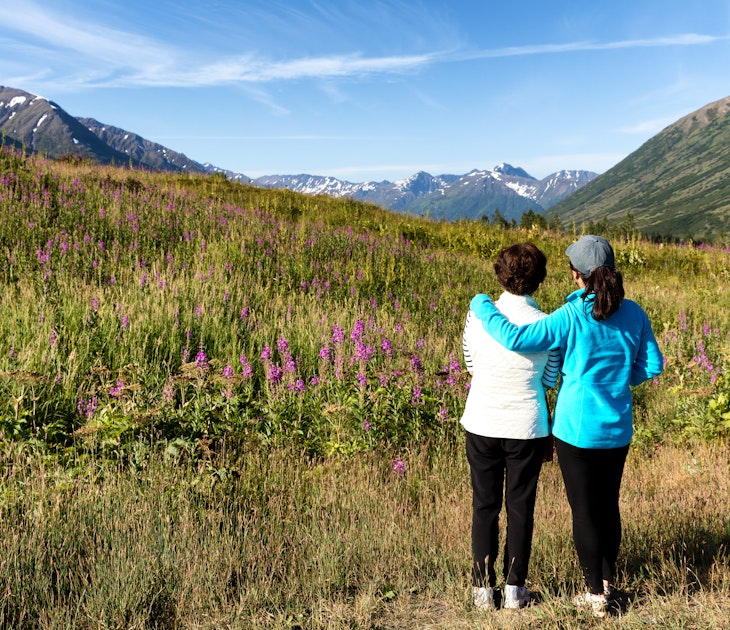
Festivals & Events
Mar 29, 2024 • 5 min read
From freezing darkness and empty ski slopes to endless sunshine and cruise crowds, each Alaskan season has its pros and cons. Find your perfect time to go.

Mar 25, 2024 • 8 min read
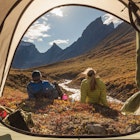
Mar 24, 2024 • 7 min read

Mar 19, 2024 • 5 min read

Mar 5, 2024 • 12 min read

Feb 2, 2024 • 6 min read

Dec 27, 2023 • 8 min read

Dec 1, 2023 • 6 min read

Oct 4, 2023 • 9 min read

Aug 3, 2023 • 7 min read

Diamond Head Volcano – Oahu Island, Honolulu, Hawaii
Diamond head volcano state landmark, honolulu, island of oahu, hawaii.
Also spelled Diamondhead (disambiguation)
Location: From Waikiki follow Diamond Head Road nestled between Makapu’u Ave. and 18th Ave. Detailed directions at bottom of this article.
GPS Coordinates for Geo Cachers: 21°15’35.0 N 157°48’42.3 W / 21.25972°N 157.81175°W / 21.25972; -157.81175
WHAT IS DIAMOND HEAD VOLCANO ABOUT?
Diamond Head is a volcanic cone with highest vertical height reaching 762 feet (232.3 meters) into the Honolulu sky. The crater is 3,520 feet in diameter, encompassing 350 acres of space. Diamond head is located in the Hawaiian Islands on the island of Oahu near Waikiki, and overlooking the Pacific Ocean. It is part of the Hawaiian Islands Volcanic range, which is the result of a violent explosion about 300,000 years ago which was also responsible for numerous famous Oahu landmarks like Punchbowl crater, Koko Head (which can also be explored on foot), Manana Island (near Makapu’u), and Hanauma Bay snorkeling paradise.
The origin of the English name, “Diamond head” came from 19th century British sailors who thought the sparkling, clear calcite crystals were diamonds. Hawaiians had named the volcano “L’ahi”, literally meaning “brow of the tuna” (tuna fish, ‘ahi’ in Hawaiian language) which some say the cone looks like when viewed from Waikiki. Diamond Head park is owned by the State of Hawaii and governed by the Department of Land and Natural Resources, Division of State Parks, State of Hawaii centered in Honolulu.
MY FIRST TRIP TO DIAMOND HEAD VOLCANO
Diamond Head Tunnel by Alan Levine is licensed under CC0 1.0 . Image may have been resized or cropped from original
Christmas day, 1985 some friends of mine and I headed to Diamond Head to climb this extinct volcano. We parked outside the vent and walked on a road that led through one of the volcanic walls. The inside is vast – like a big round, flat baseball stadium or pavilion. It’s an odd feeling the first time you’re standing in the center of a volcano. The explosion that created the 700 foot high rim must have shook all the Hawaiian islands.
We bought some bottled water at the bottom of the Diamond Head trail and started the slow ascent to the top. There is a paved sidewalk for some of the journey, volcanic dirt path and concrete steps for other sections. The path is not too steep and I saw people of all ages and sizes. Go slowly and you can make it to the top like everyone else eventually does. There are 76 steps first, then 99 steps and a 200+ feet tunnel that change up the climb and give you some variety. At the top is a tight staircase that spirals up inside the military observation platform (bunker) built in 1908.
There is a platform at the top of the volcano that is actually over top a military bunker for the World War II conflict. No artillery was ever fired from Diamond Head, but you’d never know that by looking at it.
The views from the top of the volcano are as gorgeous as any I’ve seen around the world – world class, and maybe the ultimate view I’ve ever seen. The water of Waikiki is crystal blue, the greens of Kapiolani park, stunning. Diamond Head can be seen from as far as Eva Beach, Pearl Harbor, and Hawaii Kai, as well as almost anywhere on the southwest side of the Ko’olau mountains. The adventurous can walk around the rim of the volcano for a short while to see other spots, and be afforded different views.
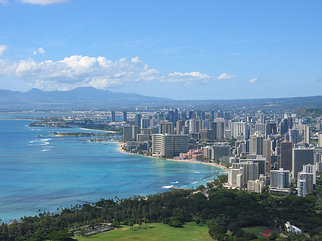
Blue Pacific Ocean and downtown Waikiki highrise buildings with the green grass of Kapiolani park. Copyright skyseeker at Flickr.com Creative Commons. Where have you ever stayed in these Waikiki hotels? by skyseeker is licensed under CC BY 2.0 . Image may have been resized or cropped from original
The Diamond Head attraction is an absolute must-see on your vacation, no matter how old you are, how heavy you are, how unmotivated you are. Once you arrive at the base of the climb the motivation will hit you and you’ll make yourself get up to the top like the kids and grandparents that are coming the opposite way, having already conquered this amazing place.
WHAT CAN YOU DO AT DIAMOND HEAD VOLCANO NATIONAL PARK?
Climb it! The name of the trail is, “Diamond Head Summit Trail” and it winds almost a mile up the inside wall of the volcano.
Surf! At the base of Diamond Head is some of the most consistent surfing to be found in the Hawaiian islands. Groms (beginners) to experts regularly surf the area – a couple hundred yards in width. Surf is typically 2-3 feet high with regular sets coming almost every day of the year. Caution is advised, as the waves are breaking over shallow coral reef.
- Diamond Head is hot and dry, and receives less than 25 inches per year in annual precipitation
- Flora: Ilima (Sida fallax) – an abundant native plant with yellow-orange flowers that is seen often within Diamond Head crater
- Kiawe (Algoroba) – from South America, this tree is common in the leeward areas of the major Hawaiian islands. Close in nature to “mesquite”. It is grown for cattle feed and charcoal.
- Koa Haole (Leucaena) – Similar to kiawe it’s a small tree that adapted to the crater’s dry, lowland. The name when translated means “foreign koa”.
- Lions Ear (Leonotis) – originally from tropical Africa this is an annual plant introduced to Hawaii in early 20th century. It has distinctive prickly flower clusters that vary in color from green to brown depending on how dry they are.

GEOLOGIC CONDITIONS AND HISTORY
The Honolulu Volcanic Series created a number of volcanic vents, volcanic cones and flows on and around Oahu – of which Diamond Head is part of. This series created two of the best known landmarks of Hawaii – Diamond Head Volcano and Hanauma Bay.
Diamond Head Volcano, at 150,000 years old isn’t near as old as the Ko’olau mountain range that divides the mauka and leeward sides of the islands – at 2.6 million years old.
The massive eruption that blew through the bottom of the sea floor, coral reef, and long-hardened volcanic earth that created Diamond Head was likely very quick, lasting a couple of days. The Diamond Head cone is very symmetrical, leading scientists to conclude that it was a very fast eruption and quick cooling off.
Volcanic scientists don’t believe Diamond Head will erupt again because the type of eruption that created it tends to be monogenetic, not likely to repeat the same way.
Ancient Hawaiians, arriving to Hawaii between 1,000 and 1,500 years ago used the peak of the Diamond Head lava cone to build fires to help boats navigate the reef below. There were reportedly Heiaus – Hawaiian religious shrines, temples, as well.
In late 1700 foreigners had made it to Diamond Head and climbed it’s interior to the peak. Curiously they found no evidence of Hawaiians having been there. In Hawaiian culture the volcanoes were there home of Pele – and so, kapu . Kapu means forbidden and no Hawaiian would ever consider going there to the crater. The Heiau were build along the walls of the volcano.
Hawaii was annexed by the United States in 1898. Perimeter defense of the country was of prime importance so the military assigned Fort Ruger, Hawaii’s 1st military reservation inside Diamond Head crater. An entire battery of gunpowder canons was placed in the well protected fort – which have since been removed. In 1903 the US government purchased the crater for its military facilities. The sacred Hawaiian Heiau were destroyed and the sacred rocks used for rock needed for military projects. Hawaii became the 50th US State in 1959 fueling an increasing tourist count. Around 1975 some parts of the crater were sectioned off for public use. The official Diamond Head State Monument was established in 1962. It was made a National US Natural Landmark in 1968. Large Woodstock-like concerts were held in the crater from 1968. The state park inside the walls of the cone was officially opened for public recreational use in 1976.
Today there is also an operational Federal Aviation Administration (FAA) facility inside the crater as well as various facilities for Hawaii Civil Defense, Honolulu Emergency Services and the US National Guard.
The US military still maintains antennas and other equipment at Diamond Head in an off-limits area. An observation deck was constructed at the summit in 1910 to provide target sighting and a four level underground complex was built within the walls of the crater as a command post. A 580-foot tunnel was dug through the crater wall to provide easier access to the Fort.
From 1979 to 1999 the amount of visitors to Diamond Head increased from 41,000 to 800,000. Today Diamond Head Volcano National Park receives over 1 million visitors per year, and over 2,000 per day climb the interior trail leading to the volcano’s rim.
COMMERCIALIZATION
Diamond Head is the most recognizable landmark of Hawaii – worldwide. You’ll find the volcano’s images on logos, shirts, shoes, sheets, pillows, vans, tour agencies windows, literally everywhere in Hawaii. In 1975 there was a Diamond Head game show on television hosted by Bob Eubanks. Contestants that got to the finals were able to climb into a clear “money volcano” to try their skill at catching flying paper money propelled into the air by fans.
Diamond Head Park Entrance Fee:
As of 2016 visitors pay $5.00 per car or $1 per person for pedestrians – including those dropped off by taxi or other vehicle. Commercial vehicles fees: $10.00 cars/vans, $20 mini-buses, $40 buses.
When Can I Visit Diamond Head Volcano?
Hours: Daily 6:00 a.m. to 6:00p.m., Every day of the year including holidays
Trip Duration:
Most people can climb to the top within 1.5 – 2 hours the sign at the bottom say. I think most people get up in 1 hour. The climb requires some exertion. There are cautions for those with heart problems because in the heat it can be a strenuous climb for some.
WHAT SHOULD YOU BRING?
- bottled water – 1-2 liters or quarts per person should be enough
- small flashlight – nobody else has them, but your trip through the tunnel will be safer with one
- wear Teva-type sport sandals with multiple straps so you don’t slip out of your shoes, or athletic shoes. Hawaiian ‘slippahs” (flip-flops) are not recommended.
- wide brimmed hat
- loose long sleeved shirt if you don’t want burned
- camera – and video recorder
DIAMOND HEAD TIPS
- Arrive just before 6 am. to beat the hundreds of other visitors that will be arriving by tour bus shortly after. The climb is cooler at this time too – you’ll appreciate it!
- Staff reports that 70% of visitors come between 9 am and 1 pm. Avoid these hours for the best experience!
- The winds are blocked by the crater walls so even though it might be windy at the beach, it will be hot inside the crater where the dark volcanic rock holds the heat and the walls block much of the wind. Be prepared, there are many helicopter rescues for tourists that have heat exhaustion.
- At about 4:30 pm. each day the staff won’t let you start the hike because you won’t get up and down in time before the park closes at 6 pm.
- Sunrise varies between 5:49 am. and 7:12 am. Sunset varies between 5:48 pm. to 7:18 pm.
- No shade, so go early or late afternoon to avoid the sun as much as possible
- Bathrooms, water, souvenirs available before you climb. No restroom or water at peak.
- No smoking on the trail.
- No strollers allowed.
- No climbing the lava walls off the trail.
- If you are fit you can make it to the top in under 30 minutes.
- Occasional closures of the park for maintenance – see this page first for latest info.
- The visitor information stand has artistic wall exhibits, beverages in vending machines, a lunch wagon selling food and beverages, and informative signs. The prices are high – if you’re cost conscious, bring your own drinks and snacks.
- But, you should buy the Hawaiian Shave Ice after you’re finished with the hike.
- Use the wire cage for recycling plastic and aluminum – the money collected from recycling goes to local Hawaiian schools.
- Theft is sometimes a problem, even with the guard gate. Lock your vehicles or, take all valuables with you.
Official Brochure:
Diamond Head Park Brochure – they removed from online
DIAMOND HEAD NATIONAL PARK REVIEWS
208 reviewers of Diamond Head Volcano on review site, Yelp.com, gave it an average 4.5 out of 5 rating. Those that rated less than a full 5 stars mostly had issues with the crowd, so they went at the wrong time. Go before 7 am. for the best experience.
By car from Waikiki go east along Kalakaua to the intersection with Monsarrat Avenue at the Honolulu Zoo corner. Turn left onto Monsarrat and proceed 1 ¼ miles until the road becomes Diamond Head Road. Follow this road for ¼ mile to the access road to the crater. Go through the tunnel into the interior of the crater and proceed to the designated parking area.
By bus – take TheBus (#58) from Waikiki. Tell the bus driver you’d like to get off at Diamond Head.
Bottom Line: Diamond Head Volcano is a world-class attraction that won’t disappoint you. It is fun for the entire family and you will be very happy you planned a trip here to see it.
Share This Story, Choose Your Platform!
About the author: peter kay, what do you think cancel reply, ready to live the dream, get the newsletter.
Complete your journey to Hawaii with weekly priceless wisdom that will show you how.
Is Hawaii Right For You?
Hawaii is paradise for some, but a nightmare for others. What about you? Find out!
Editor’s Picks
Copyright (C) 2007-2024 CyberCom, Inc. All Rights Reserved

Best Sights to See on an Oahu Volcano Tour
by PilotA | Jan 8, 2024 | Oahu

Oahu draws millions of visitors to its white sandy beaches every year, but this stunning island boasts more natural wonders than just sandy stretches. Volcanic landscapes litter the land, detailing the island’s geological story while showcasing its rugged beauty. If you want to see Oahu’s volcanic peaks, craters, crags, and cones, you should book an Oahu volcano tour by helicopter.
At Honolulu Helicopter Tours , we specialize in providing in-depth helicopter tours over Oahu that give you a glimpse of all this island’s enchanting highlights, from the North Shore Beaches to the Diamond Head Volcanic Cone on the island’s south coast. Call us today to find out how our helicopter tours take sightseeing to the next level. Below, we shed light on some of the most awe-inspiring sites you’ll soar over an on Oahu volcano tour.
Oahu Volcano Tour: Most Notable Sights
From the iconic Diamond Head Crater to the winding valleys of the Waianae Range, here are some of the most spectacular sights to look out for on your Oahu volcano tour.
Diamond Head Crater

Located by the coast right next to Honolulu, the Diamond Head Crater is one of the most famous natural phenomena on the island of Oahu. While hiking to the summit of this extinct volcanic cone is a popular activity with those in search of panoramic views of Honolulu and the Pacific, a helicopter tour offers an unparalleled aerial perspective.
Koko Crater

Located on the southeastern tip of Oahu, the Koko Crater is a distinctive tuff cone that showcases nature’s architectural prowess. The climb to the summit may be steep, but it rewards you with breathtaking views over the surrounding area. If you’d rather rest your legs while taking in even more expansive views, an Oahu volcano tour by helicopter is the perfect alternative.
Hanauma Bay

While best known as a hotspot for snorkeling, Hanauma Bay’s origins make it appeal to those who are interested in Hawaii’s volcanic landscapes. The bay itself is a volcanic crater that has been eroded by the ocean, resulting in a beautiful bay for a diverse array of marine life.
Makapu’u Point Lighthouse

Perched on top of a volcanic headland, the Makapu’u Point Lighthouse is one of Oahu’s best vantage points for unobstructed views of the Pacific Ocean. During a flight over this famous landmark, you can soak up the surrounds of rugged cliffs where the sea meets the land.
Waianae Range

As you fly over the Waianae Range, you can observe deep valleys, dramatic cliffs, and unique geological formations that have shaped the landscape over millions of years due to volcanic activity.
Book an Oahu Volcano Tour Today
In less than 60 minutes, an Oahu volcano tour by helicopter will introduce you to some of the island’s most awe-inspiring volcanic landscapes, which include the Diamond Head Crater, the Koko Crater, Hanauma Bay, the Makapu’u Point Lighthouse, the Waianae Range, and much more. Book your tour today with Honolulu Helicopter Tours, or contact our friendly experts for more information.
Recent Posts
- Our Guide to the Top 5 Waterfalls in Oahu
- Top 7 Things to Do at Turtle Beach, Oahu
- What You Can Expect to See on a Turtle Bay Helicopter Tour
- 6 Most Popular Activities at Sunset Beach, Oahu
- 6 Compelling Reasons to Embark on a Doors Off Helicopter Oahu Tour
Recent Comments
- HAWAII TRAVEL AND LIFESTYLE. ALOHA WITH LOVE, AMY.
- Terms & Privacy
Get Emails From Hawaii!

- Get Started
- Self-Guided GPS Audio Tours
- Book Tours & Activities
- Search for:
Travel Guides
The complete guide to visiting the hawaii volcanoes national park.

This post may contain affiliate links, which means I'll earn a small commission if you purchase something through these links. You won't pay any extra; instead, you'll be helping Aloha With Love to thrive. Thank you! Learn more .
A visit to Hawaii Volcanoes National Park is not just a popular activity on the Big Island of Hawaii. It’s one of the best things to do in Hawaii and you’ll be so glad to spend a day or two exploring the park in its entirety. Besides the obvious of seeing lava, you’ll want to set aside time for hikes, lava tubes, viewpoints, scenic drives, and more. There’s a lot to do!
Aloha with love, Amy
About Hawaii Volcanoes National Park
Hawaii Volcanoes National Park is managed by the National Park Service and you can find all the information you need on the National Park Service website . The first thing you should know about this park is that there is plenty to do. In fact, the fee you’ll pay to get in is actually good for one week. So if you have the time and interest, you might want to plan your Hawaii Volcanoes National Park activities over several days. However, most visitors do tend to squeeze as much as they can into one day since there are so many more things to do on the Big Island.

Rates and hours
As of January 2020, the entrance fees for the park are:
- $30 per private, non-commercial vehicle for 7 days. Most Hawaii visitors will fall under this category with their usual car rental, as long as the vehicle holds 15 or less.
- $15 per pedestrian or bicycle for 7 days, for those hiking or biking into the park.
- $25 per motorcycle for 7 days. Since this is only $5 less than a car, you might want to consider carpooling if you’re traveling in a group to save some big bucks per person.
- $55 for the Hawaii tri-park annual pass. Valid for 12 months from the purchase date, this gives you one-year access to three of Hawaii’s national parks: Hawaii Volcanoes National Park (Big Island), Haleakala National Park (Maui), Puuhonua O Honaunau National Historical Park (Big Island).
- As a national park, there are several applicable passes and no-fee days you can use to gain entrance into Hawaii Volcanoes National Park.
Opening hours
While Hawaii Volcanoes National Park is generally open 24 hours a day, 7 days a week, it’s important to remember that the ongoing eruptions, lava flow, smoke plumes, etc. can and will affect certain areas of the park. You may have limited access to certain areas and in some cases certain attractions will be completely blocked off for your safety.
Most of the time these changes are long-lasting. The best way to plan your trip and activities is to visit the NPS website for park updates and to watch local Hawaii news. Any lava flow, eruptions, or smoke plumes that could affect your health and safety is big news here in Hawaii and will be reported on.
The other thing that will put a dent into your itinerary is parking. The more popular sites will fill up fast so you should be prepared to be flexible and have some back-up destinations in mind. If you plan to spend some time at the Kilauea Visitor Center (a jumping off point for many attractions and hikes), start your day early and get there before 8 AM. There are only 125 parking spots here and with about 2 million visitors every year, this parking lot won’t have any open space from 10 AM – 2 PM.
A few other popular spots that fill up fast (especially in the afternoon) are the Kilauea Overlook, Kilauea Iki Overlook, Thurston Lava Tube (Nahuku), and the Devastation Trail. Most of these will run out of parking between 10 AM to 2 PM and you’ll be stuck either wondering what to do next or waiting around endlessly for a spot to open.
What’s the weather like?
Hawaii Volcanoes National Park is vast and unlike most everywhere else on Hawaii, it’s not just “hot” here. Depending on where and when and what time of day your visiting, you can expect everything from misty fog to snow (and sunshine, too!).
- Kilauea : One of two volcanoes in Hawaii Volcanoes National Park. Be ready for rain, mist, and fog. You’ll be at a 4,000-foot elevation so a rain jacket and even some warm clothing is a great idea. In fact, the summit can be 12 – 15 degrees cooler than sea level.
- Mauna Loa : The second volcano in the park and the largest volcano on Earth. Reaching almost a 14,000-foot elevation, it’s going to be cold at the summit! Dress warmly and know that snow is a possible factor year-found.
- Weather changes : Keep in mind that the weather can change suddenly at both of these summits.
- Air quality : Another thing to be aware of is that the air quality is measured here due to the smoke plumes that come out of the eruption. This is important for those with heart or respiratory problems such as asthma. Infants, children, and pregnant women should also take extra caution. Even here on Oahu, we take note of any vog (volcanic fog) that blows over. Some of my family, friends, and co-workers have suffered allergic-like reactions, migraines, and generally not feeling well.
There are 13 day hikes and and 7 backcountry hikes you can do at the park, but I won’t go over all of them here. You can find out more about each hike on the NPS website including any alerts such as closures or air quality warnings for certain areas. While all the hikes are interesting and have something to offer, here are my recommended ones:
- Kilauea Iki Trail : One of the most popular hikes is the Kilauea Iki Trail. This hike takes you from the rainforest on the crater rim down into the caldera (where there’s steam coming off the ground).
- Devastation Trail : On a clear day, this is a great hike where you can see both summits of Mauna Loa and Mauna Kea.
- Kipukapuauli Trail (Bird Park) : For those searching for a short hike or want to stretch your legs, this one-mile loop trail is a small oasis of forest surrounded by lava rock with a number of Hawaii’s native birds and plants to see.
- Mauna Iki Trail : The highlight of this two-mile trail are the ancient footprints you’ll see carved into the lava. It’s believed that these footprints are the remnants from soldiers running away from a Kilauea eruption.
- Crater Rim Trail : Most visitors will explore at least a small part of this trail during their visit as it is accessible from several locations.
- Thurston Lava Tube (Nahuku) : The lava tubes on the Big Island are a unique experience and I recommend going through at least one of them. There are several around the island (some run privately), but the Thurston Lava Tube is the most well-known as it’s within park premises.
- Puuloa Petroglyphs : Another really neat trail that takes you to one of the largest collections of petroglyphs in Hawaii. You’ll be hiking on lava rock and then a boardwalk once you get closer to the 23,000 petroglyphs.
- Mauna Loa : The most well-known backcountry hike is probably the long walk up Mauna Loa, the largest volcano on Earth.
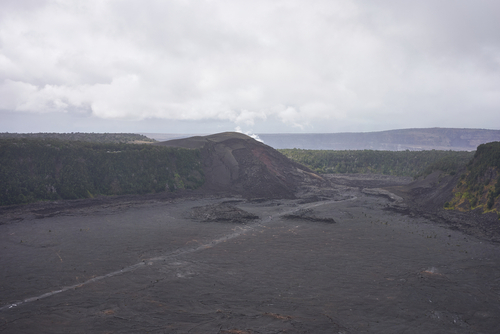
Explore the Kahuku Unit
The Kahuku Unit refers to the side of Mauna Loa dedicated to what was once one of Hawaii’s biggest cattle ranches. There are several day hikes you can do here where you can see some great panoramic views and pastures.
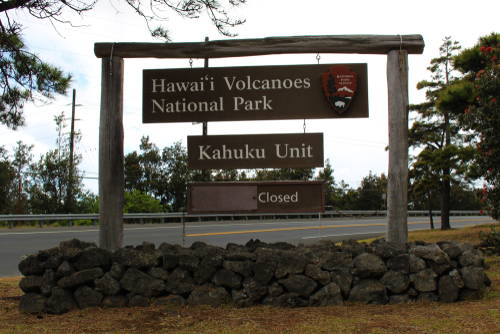
There are two fantastic drives to Hawaii Volcanoes National Park: the Crater Rim Drive and the Chain of Craters Road. Both can be done in the same day along with a hike. In fact, a popular itinerary choice is to drive both of these along with the Kilauea Iki hike in one day. All three of these can be done in one full day at the park.
About Crater Rim Drive : 11-mile drive that begins at the Kilauea Visitor Center and Kilauea Overlook. Don’t miss Wahinekapu (Steaming Bluff) and the boardwalk at Haakulamanu (Sulphur Banks).
About Chain of Craters Road : 18-mile road that takes you from the Crater Rim Drive south to the ocean. You’ll see a variety of lava flows, cinder cones, and craters on the way.

Camping and lodging
One of the coolest things to do on the Big Island is camping or staying overnight at Hawaii Volcanoes National Park. If you’re an outdoorsy person, camping here is pretty memorable. There are 2 campgrounds (I recommend Namakanipaio over Kulanaokuaiki just for the convenience) and you can stay up to a week. So if you have the time and interest in all of the different hikes available, it might be worth it to spend a few days here.
For those who’d rather stay at a hotel, the historic Volcano House Hotel sits on the Kilauea caldera and is highly rated.
Things to know
Getting there.
Hawaii Volcanoes National Park is quite a drive to get to from Kailua-Kona. The trip is about a 2.5 – 3 hour drive, so I recommend coming in from Hilo (a 45-minute drive) if you plan to only spend a day here. You can also consider camping or lodging at the park, or finding a rental in one of the small nearby towns.
It’s important to note that driving yourself is the only way to get to and explore the park. The public bus (Hele On Bus) does not come here and neither is there a shuttle service to take you from place to place.
Closures and updates
This national park is all about volcanoes, which means you’ll run into lava flows, smoke plumes, sudden weather changes, and potentially dangerous situations. The National Park Service staff are very good at making sure you do not put yourself in a bad situation by closing certain hikes, viewpoints, and points of interests as needed. Stay notified on any changes as they are closed or prohibited for a reason.
Plants and animals
On these volcanoes (and high elevations), you’ll have a chance to spot some rare plants and animals. Some of them can’t be found anywhere else in the world, which makes the nature experience here quite unique. There’s a very special ecosystem here, so it’s especially important that you leave no trace when you visit this park.
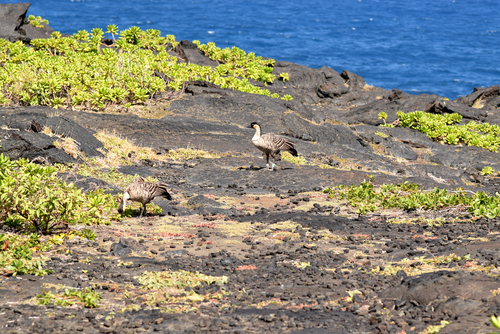
Amy Fujimoto
I grew up in Hawaii and love trying out new things to do in Hawaii. When I'm not writing about Hawaii travel, I document my Mom's recipes, hike with Daisy the waddling rescue, work on my 200-gallon aquaponics system, and dream about my future van conversion so I can do some more traveling.
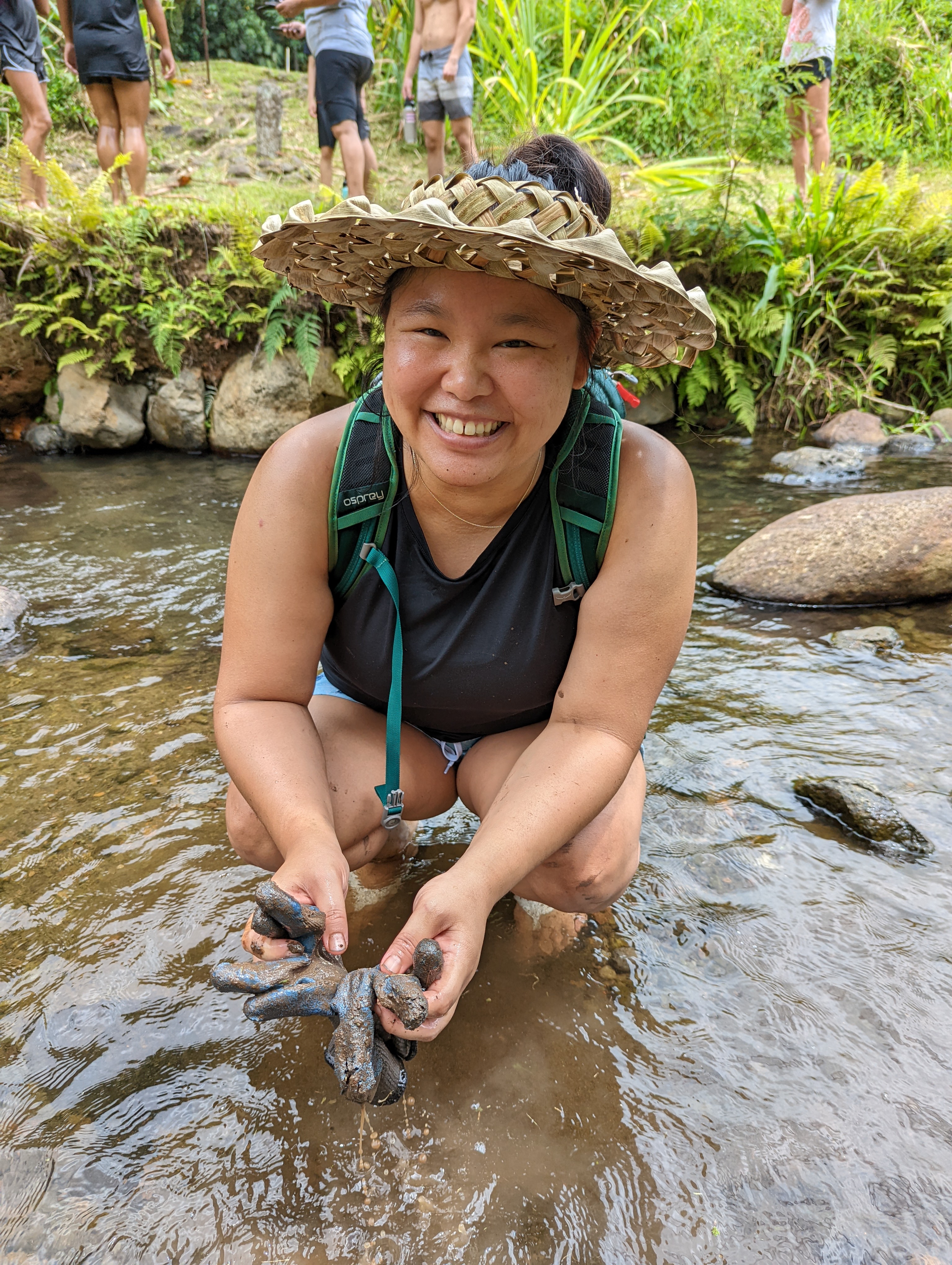
I travel, explore, work and enjoy life in Hawaii. Get email updates and join me on my adventures.
Leave a Reply Cancel reply
Your email address will not be published. Required fields are marked *
- Get Emails From Hawaii
Username or email address *
Password *
Remember me Log in
Lost your password?
Email address *
Your personal data will be used to support your experience throughout this website, to manage access to your account, and for other purposes described in our privacy policy .
- (808)900-6070
- 100% Refund Policy

Volcano Tours From Oahu
Depart from oahu by air.
Just because you’re staying in Waikiki doesn’t mean you can’t enjoy the thrills of the Big Island. Volcano tours from Oahu include round-trip air travel from Honolulu to Hilo and fully guided experiences in Hawaii Volcanoes National Park.
Tours from Oahu
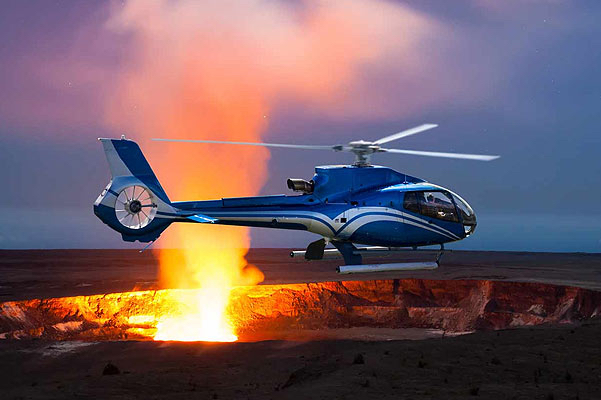
Oahu to Hilo: Helicopter & Volcano Adventure Tour
Difficulty rating.
Easy to Moderate
Tour Duration
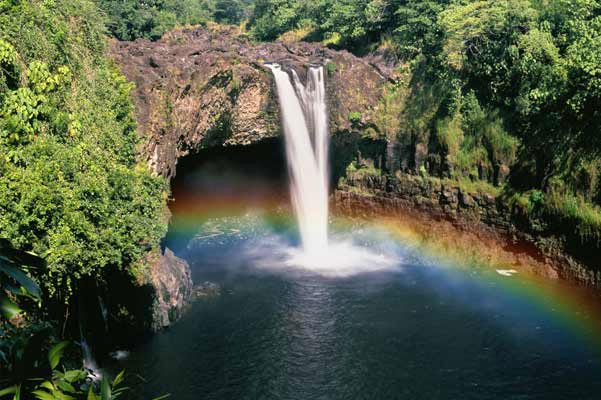
Oahu to Hilo: Volcano Adventure Tour
Frequently asked questions.
Read our answers to our customers’ common questions about volcano tours from Oahu.

Everyone who visits Hawaii Volcanoes National Park wants to see lava. You go there hoping to see lava fountaining into the air like on a National Geographic magazine.
Sorry to tell you, most visitors do not see lava.

Here’s why: Lava is dangerous. As soon as lava is fountaining or flowing in a certain area, Hawaii Civil Defense determines if it is safe to allow people near it. Usually it is not safe and the area is closed off.
How to see lava on a volcano tour
The best way to be sure you will see lava is to take a helicopter volcano tour. You will see it from hundreds of feet away, but it is still magnificent.
The chances of seeing lava from a helicopter are very high, but not guaranteed. Volcanoes are extremely unpredictable. Volcanic activity changes every day. The lava flow moves and the surface cools.
Do not make the mistake of going on a volcano tour to see lava. There are so many other reasons to go on a volcano tour. Our volcanoes have an amazing history, cultural significance, biological uniqueness, geological wonder, and a beauty like no other place in the world.
People who go just to see lava and don’t see it are disappointed. People who go to appreciate everything else about the volcano enjoy themselves. If you do see lava on a volcano tour, it is a bonus and you are a lucky one.
You want a quick answer? Sorry, the answer is constantly changing.
As we mention all over this site, the volcano is active. That means that it is moving and hard to pin down. You might see photos from a friend who saw lava flowing into the ocean a month ago, but now it is nowhere to be seen.
This is why a volcano tour is the best way to view the volcanoes. Tours will take you to see the sights in Hawaii Volcanoes National Park. Then the guide will use his contacts to find where you have the best chance of seeing lava.
Sometimes it is best viewed from inside the National Park. Sometimes it is by the shore in Kalapana. Sometimes it can only be seen from helicopters. Some days you can’t see lava anywhere you look.
The key to an enjoyable visit to the Big Island volcanoes is to go for the volcanoes and consider any sighting of lava as a bonus. If you’re whole purpose is to see lava, you could be setting yourself up for disappointment.
If you insist that lava is your focus, then a helicopter tour has the best chance of seeing lava. The pilots search for lava and communicate where the sighting is the best. When you get close, you can actually feel the heat from inside the helicopter.
Five different Volcanoes are on the Big Island of Hawaii:
- Kilauea volcano

Mauna Kea Volcano Summit. 13,796 ft. Photo https://flic.kr/p/4h5JWS
Mauna Kea is the tallest mountain in Hawaii. It is also the tallest sea mountain in the world. From it’s base at the bottom of the ocean floor it is 33,000 feet taller than Mount Everest. Mauna Kea hasn’t erupted for thousands of years, but is still considered dormant and could erupt again.
Mauna Loa is the largest volcano on earth in terms of volume.
Kilauea is the volcano that most visit us to see. It is the most active volcano in the world. It began erupting in 1983 and continues to erupt today.
Vog is volcanic fog. It is similar to smog in that it is dirty with particles that are not in typical fog.
Vog is formed when gases from the erupting volcano get into the air, mix with sunlight, oxygen and moisture.
Like smog, vog is not healthy for humans, plants or animals. Many people living near Kilaeau, experience headaches and respitory issues from vog.
Visitors on our tours will see and breath vog, but we rarely have visitors who complain of health issues as a result. Generally, complaints come more often from prolonged exposure by those living near the volcano.
Nevertheless, we encourage all visitors to pay attention to their bodies and take the following precautions:
- Drink lots of fluids
- Don’t overexert
- Don’t smoke
Does vog smell like sulfer? A little bit.

- Skip to main content
- Skip to secondary menu
- Skip to primary sidebar
- Skip to footer

Jeffsetter Travel
Travel Consultants and Travel Tips
Honolulu Volcanics – Hawaii’s Most Iconic Eruptions
February 10, 2023 by Island Miler
The Ko’olau Volcano’s Honolulu Volcanics series is Hawaii’s most iconic eruptive phase that most people don’t know about. It literally shaped Southern Oahu as we know it.
Last time, I went over what volcanoes in Hawaii are active and are potentially active. The most surprising of these, to me anyway, is the Ko’olau Volcano. It’s crazy to think that the thing still has a (remote) possibility of erupting. But, the reason that the volcano has this potential is even more interesting. Especially when you consider the fact that Ko’olau’s last (and possibly current) eruptive phase, the Honolulu Volcanics, is responsible for so much of Honolulu’s natural icons.
What is the Honolulu Volcanics
The Ko’olau Volcano had a catastrophic landslide between 1 and 1.5 million years ago. This landslide obliterated the volcano’s caldera and created an undersea rubble field 100 miles long off of Oahu’s Windward Coast. However, because of this catastrophe, Ko’olau never entered the post-shield state of Hawaiian volcanism. Instead, it skipped right over to the rejuvenation stage roughly 800,000 years ago.
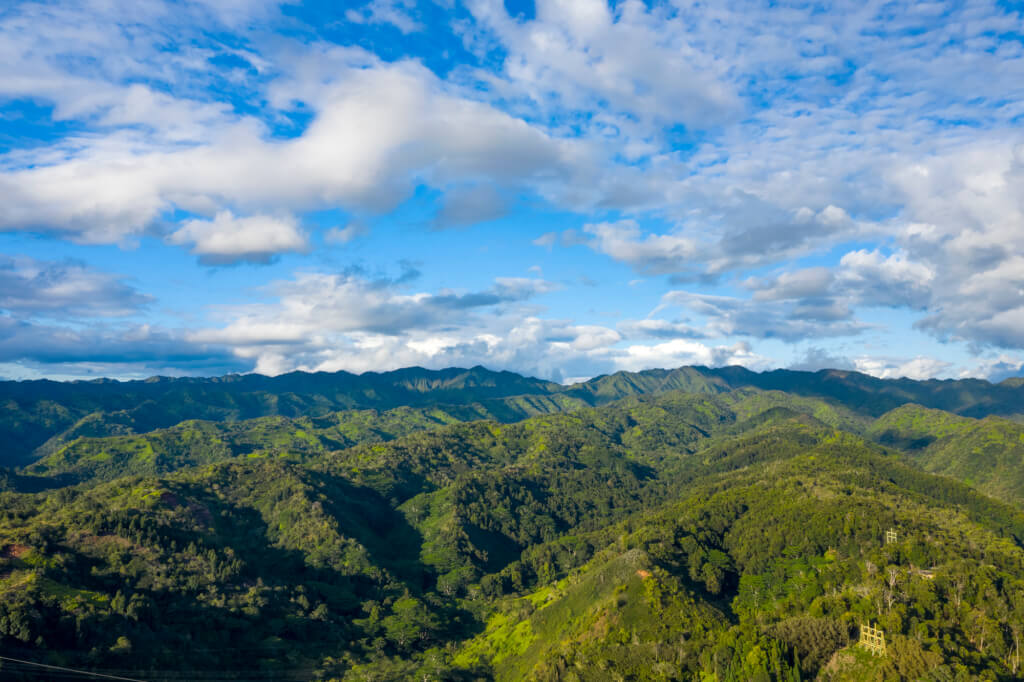
In total, the Honolulu Volcanics series produced around 40 separate eruptions in two separate pulses. The first pulse occurred between 800,000 and 250,000 years ago, while the second pulse began 120,000 years ago. The area covered by the eruption stretches from present-day Pearl Harbor to Leahi (Diamond Head), Makapuu, and up through Marine Corps Base Hawaii in Kaneohe. It’s estimated that eruptions occur roughly every 35,000 years, though it’s hard to obtain an exact figure due to the long periods of time involved.
Important Formations
The Honolulu Volcanics produced some very important parts of the island that aren’t necessarily visible. Examples of these include Salt Lake, Makalapa, Black Point, and Kaimuki, among others. Today, Makalapa is home to U.S. Pacific Fleet Command, while Salt Lake and Kaimuki are now dense neighborhoods. Tantalus, home to many prestigious homes on the island, was also formed as part of these eruptions. It’s hard to see it today, but Tantalus is a 2,000-foot cinder cone produced by the Ko’olau volcano.
Iconic Formations
Many of Honolulu’s most iconic landmarks were created by Ko’olau’s Honolulu Volcanics. These icons include Leahi (Diamond Head), Koko Crater, Punchbowl, Mañana Island, and Hanauma Bay, among others. Of these, Leahi is among the oldest, dating back as much as 520,000 years. Hanauma Bay is the youngest formation, at anywhere from 70,000 to 30,000 years old.
You know what’s more interesting? Virtually the entire Makapuu area is made of a series of volcanic cones, including Mañana.
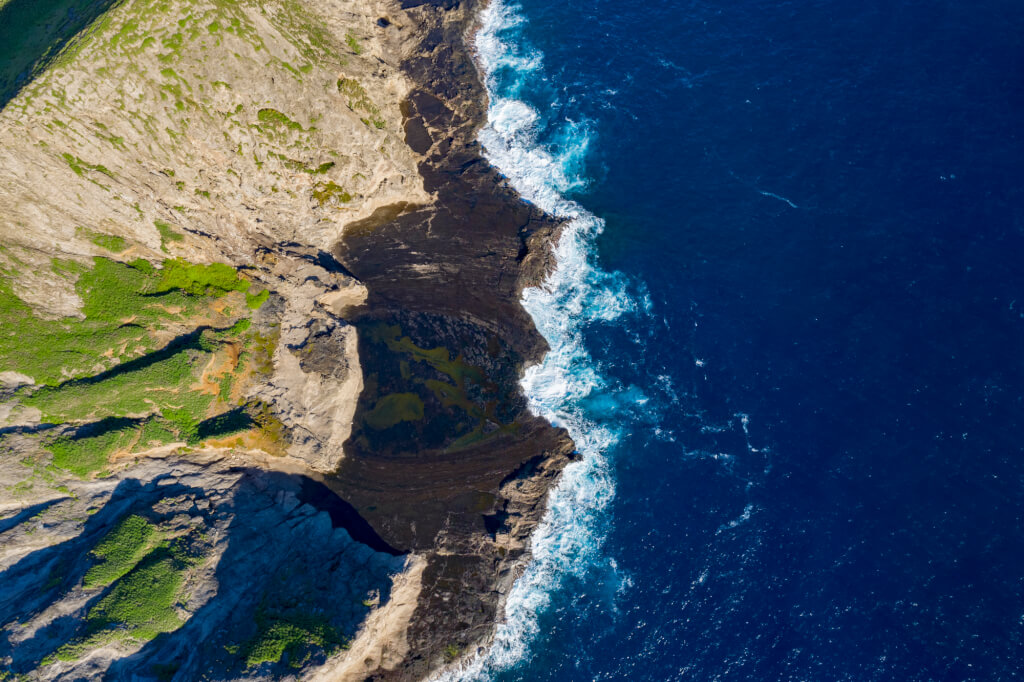
What About Mokoli’i Island or the Mokulua Islands?
Though so many of Oahu’s iconic landmarks and some of its islands and islets are a result of Honolulu Volcanics, the iconic Mokoli’i Island and Mokulua Islands (Mokes) are not. These islands are leftovers from the cataclysmic landslide that destroyed over half of the Ko’olau Volcano. In fact, Kaneohe Bay, which is where Mokoli’i is, is thought to have been part of the Ko’olau’s caldera. However, some think the location of the caldera was the area that is present-day Kailua, Lanikai, and Olomana.
Whatever the case, while some islets in the area, such as Moku Manu (near Marine Corps Base Hawaii), are a result of the Honolulu Volcanics Series, Mokoli’i and the Mokes aren’t.
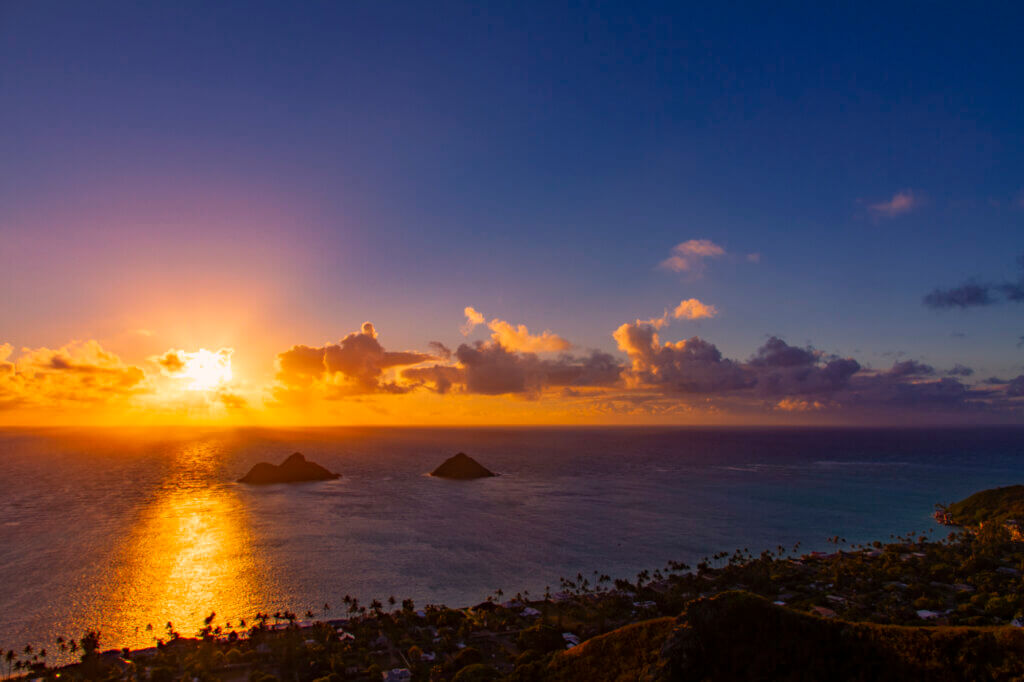
Possible Future Eruption
Will Ko’olau erupt again? It’s difficult to say. Scientists still don’t understand how or why the rejuvenation stage occurs, and there’s little chance to study the phenomena since no eruptions have occurred since humans began inhabiting the islands. In fact, even if Ko’olau does erupt again, it’s unlikely to do so in any of our lifetimes. And that might be for the better, given that any eruption outside of a submarine one is likely to be very destructive.
However, one theory suggests that the pressure Hawaii Island’s Mauna Loa is placing on the Earth’s crust causes other portions of it to lift up. This uplifting can cause depressurization in the Earth’s mantle in the affected areas, which can lead to partial melting. It’s this mantle melting that is thought to be the source of magma for the rejuvenation stage of Hawaiian volcanoes and means that, while incredibly rare, future eruptions are highly plausible. Unfortunately, we know next to nothing about this stage of volcanoes, as no scientists have ever been able to study a rejuvenation eruption.
What we do know for sure is that geothermal prospecting on other islands has shown little to no residual heat left from rejuvenation eruptions.
Honolulu Volcanics, Final Thoughts
For those of you that have been following along, I’m sure you can tell that Honolulu Volcanics is the Hawaiian volcanology topic that interests me the most. Besides me living on Oahu, this topic interests me because eruptions on this island just seem so far-fetched. Sure, we’ll likely never see a Honolulu Volcanics eruption, but that doesn’t make it any less interesting – just like how we’ll never see Kama’ehuakanaloa break the surface of the water, but it’s still very interesting.
Hawaiian Volcanism
- Introduction
- Active and Potentially Active Volcanoes of Hawaii
- Honolulu Volcanics
Important Links
- Advertising Policy and Affiliate Disclaimer
- Privacy Policy
- Contact Jeffsetter Travel Blog
- Ask Jeffsetter a Question
Recent Posts
- Disneyland Gets Its First Approval to Expand
- HNL Welcomes Autonomous Electric Shuttles
- Hawaiian Taps AFI KLM EM For 787 Parts MRO
- Software Upgrade Caused an Alaska Air Ground Stop
- Hawaiian Passengers Filed Suit to Block Merger with Alaska
- Skip to global NPS navigation
- Skip to this park navigation
- Skip to the main content
- Skip to this park information section
- Skip to the footer section

Exiting nps.gov
Alerts in effect, kīlauea visitor center.
Last updated: April 12, 2024
Park footer
Contact info, mailing address:.
P.O. Box 52 Hawaii National Park, HI 96718
808 985-6011
Stay Connected
What travelers to Hawaii can expect following Mauna Loa's eruption, how to see the lava flow

With Mauna Loa, the largest active volcano in the world, erupting , some travelers may be wondering if they can still visit Hawaii.
If you're planning a trip to Hawaii, the short answer is there's no need to change your travel plans at this time , according to the Hawaii Tourism Authority. There's actually an influx of travelers hoping to view the red glow of the lava.
The volcano started to erupt around 11:30 p.m. local time Sunday in Moku‘āweoweo Caldera, located in Hawaii Volcanoes National Park. Early Monday morning the lava started its migration from the summit to the northeast flank. As of Thursday morning, the lava flow was reported to be moving at a " significantly " slow pace, with no threat posed to communities or the Daniel K. Inouye Highway, the fastest route connecting the Kona and Hilo.
"It will be spectacular where it is, but the chances of it really interrupting the visitor industry – very, very slim," Hawaii County Mayor Mitch Roth said, according to AP .
However, some people may have their travel plans impacted. On Monday, Southwest Airlines suspended all operations in Hilo, affecting nine interisland flights between Hilo and Honolulu, a spokesperson for the airline told USA TODAY. Both Southwest Airlines and Hawaiian Airlines, the two major carriers to the islands, are offering travel waivers for those with upcoming flights to their respective Hawaii destinations.
Learn more: Best travel insurance
Most activities on Hawaii Island are operating normally, except for a few closures around the volcano.
People going to Hawaii Island or who are currently there should monitor the USGS website for updates .
Mauna Loa erupts: The largest volcano in the world erupts in Hawaii
Can I still visit Hawaii during the eruption?
Yes, visitors can keep their travel plans to the state and even Hawaii Island, officials from Hawaii Tourism Authority said in a statement , since the lava is not yet posing a threat to communities. The other islands are not impacted by the eruption.
However, the agency does advise people staying in the communities downslope of the volcano, like Pahala, to "have emergency preparedness plans ready in the event an evacuation becomes necessary." As a safety precaution and in response to people self-evacuating, shelters have opened at the Old Kona Airport in Kailua-Kona and Ka‘u Gymnasium in Pahala.
Those with plans to stay in short-term vacation rentals are advised to contact their hosts for more information.
"The major resort areas of Kailua-Kona, the Kohala Coast, and Hilo are not immediately downslope of the eruption," the agency said in a statement .
Listen up, tourists: Hawaii locals share what they wish visitors would stop doing
Are flights to Hawaii affected by the eruption?
Hawaii Island's two main airports, Ellison Onizuka Kona International Airport at Keāhole (KOA) and Hilo International Airport (ITO), remain open as of Monday afternoon in Hawaii. But people with upcoming flights in the state are advised to check with their airline about possible flight disruptions.
Southwest Airlines canceled all flights in Hilo, which affected nine flights between Hilo and Honolulu on Monday. People flying to and from any of their Hawaii destinations, including Lihue on Kauai and Honolulu, can rebook their flights on Monday and Tuesday without paying any additional fees. Normal operations resumed Tuesday.
Hawaiian Airlines posted a travel waiver on Monday morning for people flying to and from Hawaii Island between Monday, Nov. 28 and Dec. 4. Travelers can reschedule their flight at no additional cost as long as they rebook by Dec. 4 or cancel their flight for credit that expires one year from now.
"Our transpacific and interisland flights, including service to and from Kona and Hilo, are operating as scheduled," Kris Tanahara, a spokesperson for Hawaiian Airlines, told USA TODAY. The airline also added an extra flight from Hilo to Honolulu departing Monday evening to "ensure we can accommodate more travelers whose plans may have changed or been disrupted."
Are people on Hawaii Island in immediate danger?
Currently, there is no immediate danger posed to people in Hawaii. On Monday at 8 a.m., Hawaii County Mayor Mitch Roth declared a state of emergency but also wrote on Facebook that "there are no evacuations or threats to the community at this time."
The lava was moving downslope along the northeast flank, which is not populated, as of Monday morning. The Hawaii Emergency Management Agency tweeted that because the lava has moved into "less steep terrain," there is "more time for preparation and early warning" since lava moves faster in steep terrain. The shallow slopes "allow it to cool more as it moves downhill, slowing its progress even more."
That being said, historically, "the early stages of a Mauna Loa rift zone eruption can be very dynamic, and the location and advance of lava flows can change rapidly," according to the USGS Hawaiian Volcano Observatory. The last time the volcano, one of five in Hawaii Volcanoes National Park, erupted was in 1984.
Are there any health hazards from the eruption?
Volcanic gas, fine ash and Pele's Hair , which are hair strand-like glass fibers formed by gas during a volcanic eruption, could be carried downwind during this time. There is no official threat for ashfall, but people should be mindful that some areas may have "low-air quality due to vog," which is air pollution from volcanic emissions. Short-term health effects include coughing or shortness of breath.
Those with breathing problems, such as asthma, emphysema or COPD, should take precautions such as staying indoors with the doors and windows closed and monitoring the wind when planning to go outside. If you use medications for a respiratory condition, it's advised to speak to your doctor to have them on hand.
Is Hawaii Volcanoes National Park still open during the eruption?
This is a rare chance for visitors to Hawaii Volcanoes National Park to see both Mauna Loa and Kīlauea erupting at the same time. Expect more crowds and longer wait times to witness the sacred event.
The main areas of the park remain open to the public, according to a press release on Tuesday. The Mauna Loa summit, cabins and high-elevation areas have been closed since early October when the summit first began "experiencing heightened unrest." Mauna Loa Observatory, located just outside the park, is also closed.
Stop throwing coins into hot steam vents: Hawaii Volcanoes National Park asks of 'disrespectful' people
The Mauna Loa Observatory Access Road and Mauna Loa Road up to the gate at Kīpukapuaulu are closed and those who try to access these roads will be subject to fines and arrest, according to a press release by the Department of Land and Natural Resources on Tuesday.
"Hawaii Volcanoes National Park is keeping close watch on Mauna Loa in tandem with our colleagues at USGS and Hawaiʻi County Civil Defense,” Rhonda Loh Hawaii Volcanoes National Park Superintendent, said in a statement. "The park is currently open, but visitors should be prepared and stay informed."
Mauna Loa is surrounded by forests and natural reserves, which are now also closed due to the eruption. The nearby Kapāpala Game Management Area, Mauna Loa Forest Reserve, the Kīpuka ʻĀinahou Nēnē Sanctuary, ʻĀinapō Trail and cabin and the Kapāpala Forest Reserve are closed for at least 90 days.
How can I see the lava flow on Hawaii Island?
Hawaii Volcanoes National Park offers the best views of the lava flow. At night, the lava's glow is "currently visible from many areas and overlooks surrounding Kaluapele (Kīlauea caldera)." According to the park's website, here are the best viewing locations and times:
- Kūpinaʻi Pali (Waldron Ledge) at Kīlauea Visitor Center from 5 to 8 p.m.
- Kīlauea Overlook
- Overlook near Keanakākoʻi Crater from 5 to 9 p.m.
National Park Service recommended people wear closed-toe shoes and bring a rain jacket in case of inclement weather, and a headlamp for nighttime viewing.
If you're outside of the park, you can see the lava flow from Daniel K. Inouye Highway – just keep a few things in mind. People are prohibited from stopping or parking on the highway between mile markers 16 and 31. Hawaii Police Department will give citations and tow parked vehicles, according to the County of Hawaii website . People are advised to park in a safer, designated parking lot to see the lava, like the Gil Kahele Recreation Area, which is open 24 hours and offers parking spaces and restrooms.
Otherwise, many residents in both Hilo and Kona said they can see the sky glow red at night from their own homes.
When did Mauna Loa last erupt?
Volcanic activity is not unusual for Hawaii, especially Hawaii Island, but eruptions are considered rare, according to Hawaii Tourism Authority. It's been 38 years since Mauna Loa last erupted – the longest recorded quiet period for the volcano, according to USGS.
Where to See Active Volcanoes in Hawaii
Volcano hunters descend upon Hawaii for its active lava flows. In fact, The Big Island’s most active volcano -- Kilauea -- flows with such power that it grows the island by 40 acres per year. And it’s an odd thing to watch the flow. It kills everything in its path before pouring into the ocean to give birth to more land.
It’s this beautiful ability to both create and destroy that entrances visitors. The destructive nature of lava can be felt yards away from the flow. The heat is simply too unbearable to get close to the molten rock, so don’t count on that lava selfie, but the unbelievable power of it all makes for an attraction not to be missed.
The easiest, most accessible and reliable volcano to visit is Kilauea inside Volcanoes National Park on The Big Island, but Hawaii has five other active volcanoes. So, you can choose to take the path less traveled to get your volcano fix during your Hawaiian vacation if the timing is right. But, no matter which volcano you choose to chase, it makes for a once-in-a-lifetime experience.
Kilauea -- Hawaii’s Youngest, Strongest and Most Active Volcano --Inside Volcanoes National Park
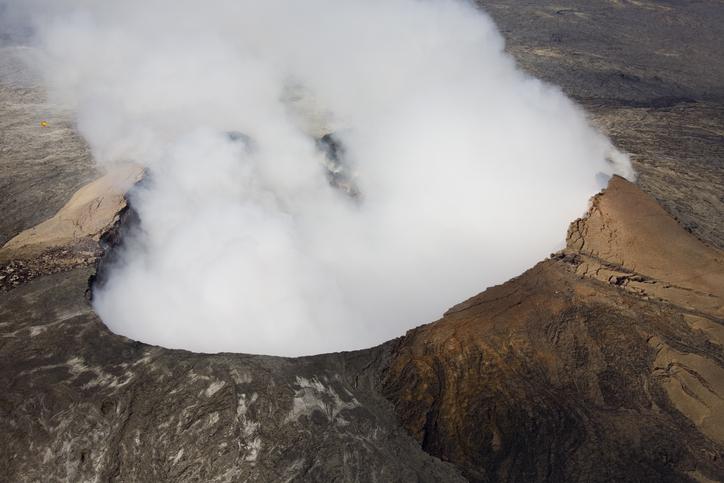
Halema’uma’u Crater, inside of Volcanoes National Park, was perceptually filled with a lake of lava. You were allowed to watch the bubbling molten rock from a safe distance at a viewing center, and the center even opened its doors after dark to give you a spectacular glowing show.
Flows of lava were commonly seen pouring out of Puʻu ʻŌʻō crater inside the park, as well. These two craters were the most reliable viewpoints for flowing lava in all of Hawaii. Unfortunately, in May of 2018, eruptions changed the landscape of the park and drained the craters. Currently, there is no more lava flowing in Volcanoes National Park.
But Park Rangers and other officials remain optimistic because this isn’t the first time that the craters have drained. A similar eruption completely drained Halema’uma’u Crater back in 1929, and the lava returned a short period later.
Keep up to date with this website to get more information about the flows of lava inside Volcanoes National Park. But, even if there is no lava flowing inside the park, the Volcano is a great place to visit. It contains massive volcanic craters that are now stable, so you can hike down inside of them. Essentially, you’ll be walking around the very top of a long-dead volcano. And the trails all have interesting names, like “Devastation Trail.” It’s a great way to see the fresh earthen scars left by the power of mother nature.
The visitors center is also a great place to learn about volcanic activity on the islands. You’ll learn a lot, and you can always ask the Park Rangers inside about the flow of lava on the island. Kilauea has stopped its activity inside the park, but it hasn’t stopped activity altogether. That means lava is flowing somewhere on the island, and the Park Rangers will have all that information on hand. And if you’re lucky, you can hike up to the new lava flow.
Kilauea Lava Flow
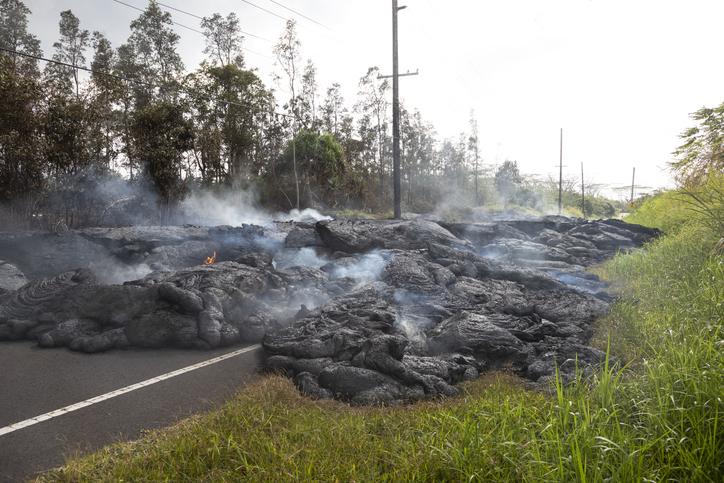
You can see that lava flow in one of three ways. First, you can find the flow yourself and hike up to it. Secondly, you can hire a tour guide to be taken to the lava flow. Or, thirdly, you can jump on a boat that takes you up to the lava flow as it pours into the ocean somewhere on the southeast coast.
Seeing Kilauea’s Flows Yourself
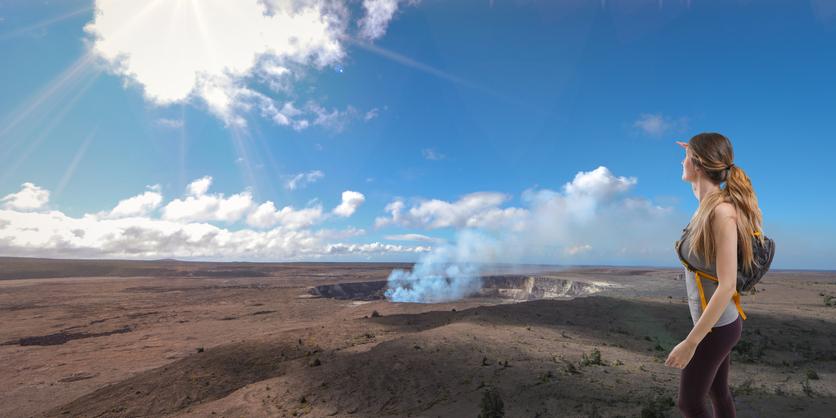
The Lower East Rift Zone is a vast field of sharp volcanic rock. There’s a road carved into this volcanic rock that takes you past some houses built into the inhospitable area. Some of the houses have been destroyed, but the entirety of the road is not open to the public. You’ll have to park your car and continue on foot, but you can usually find a vendor renting off-road bikes.
From here, you’ll have to hump yourself down to the lava flow. It’s black as far as the eye can see, and the tropical sun reflects heavily off the glassy rock, so make sure to pack sunscreen, a hat and plenty of water. But, sooner or later, your hard work will pay off. You’ll run into the flow of lava as it makes its way down to the ocean.
If you’re lucky, the lava flow will be like a river on the surface, but most of the time the lava flows underneath the surface. You’ll only be able to see it through cracks in the surface rock. But don’t worry about walking over the lava flow. The volcanic rock field is cordoned off to keep visitors safe.
You’ll also have to be very careful near the ocean. The lava creates a hissing cloud of steam and glass that is toxic to inhale. Again, state officials are very good at regulating foot traffic around the lava, but you should still be careful to keep your distance from the plume.
State officials are working hard to create a more permanent lava viewing platform after the most recent eruption changed the Big Island’s landscape. Stay tuned to this site for more information about Kilauea lava viewing as it becomes available.
Kilauea Tour Guide
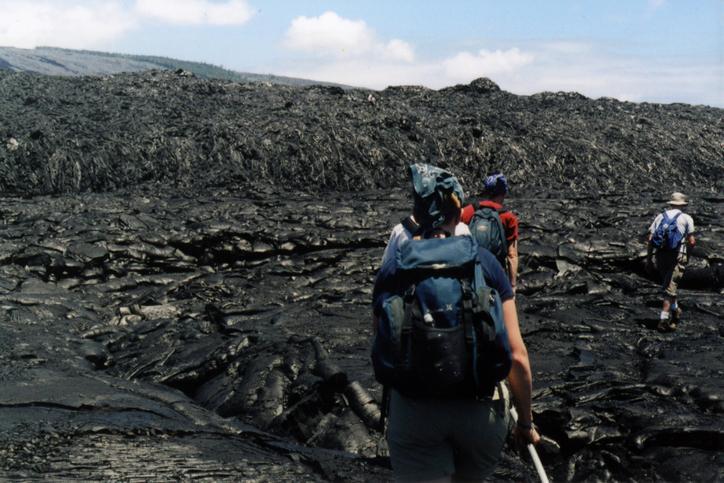
After all, the flows are constantly changing. So, no matter how well you plan ahead of time, you’ll have to do research the day you want to go see the lava. Relying on an expert will save you that research time, and time is the most valuable resource you have on the Hawaiian islands.
An expert will also be able to take you right to the hot spot. Pun intended. You won’t have to go venturing off into a volcano field on foot to find it yourself. So, a guide can save you time and effort. And it’s really hot out there on the black rocks.
Kilauea By Boat
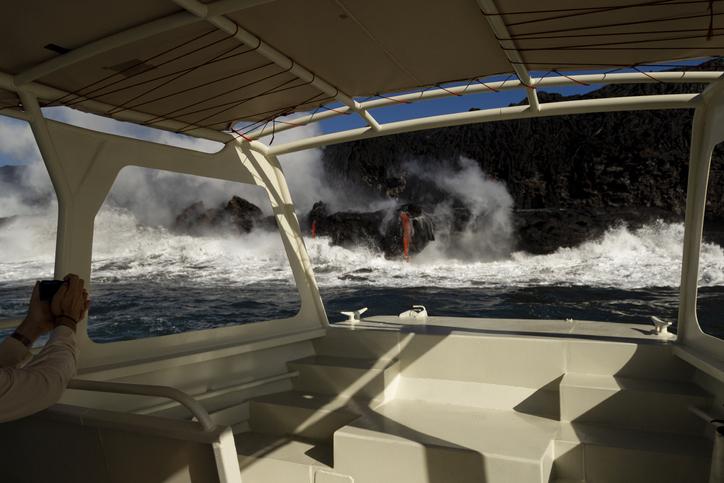
You don’t have to worry about getting too close or inhaling the toxic fumes because you are under the guidance of an experienced tour guide. That means you’ll get as close as humanly possible to the lava itself which makes for a stunning social media pic. A boat also takes all the guesswork and effort out of the equation. You just sit back and enjoy the destructive yet life-giving molten rock.
Hawaii’s Five Other Active Volcanoes
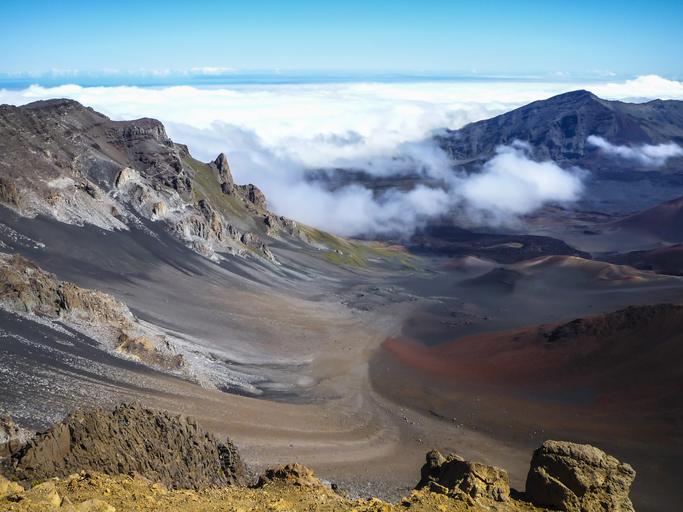
All of the Hawaiian islands have been formed by this activity, but most of the island’s volcanoes have become dormant. There is no volcanic activity on Kauai, Oahu, Molokai or Lanai. That means these islands, like many before them, are now eroding into the ocean. And, one day, they will perish altogether.
Hawaii’s four other active volcanoes are all on the Big Island. It’s fitting as the Big Island continues to grow by 40 acres per year, and a visit to Hawaii will illustrate the youth of the island. Nearly the entire western side of the island is a lava rock field where vegetation is yet to grow, and many of the island’s beaches are black sand. That means the lava rock has been pummeled by the ocean into sharp little pieces, but the beach has not yet had time to accumulate soft white sand.
The Big Island’s volcanoes include Mauna Kea , Mauna Loa, Hualalai, and Loihi. The massive mountains that mark the Big Island are still active volcanoes, though the activity is fairly rare. Mauna Loa last erupted in 1984, and the eruption lasted for 22 days. Mauna Kea has erupted about every six years and is the largest volcano on earth. Predicting lava flow from these 13,000-foot peaks is near impossible, so planning a visit around their eruptions would have to be last-minute.
Hualalai is to Mauna Loa’s northwest. It’s technically still active, but its slopes have been covered by Mauna Loa’s eruptions over the centuries, and it last erupted in 1801. And lonely Loihi can be found just south of Kilauea. Unfortunately, the volcano is completely underwater.
Haleakala National Park
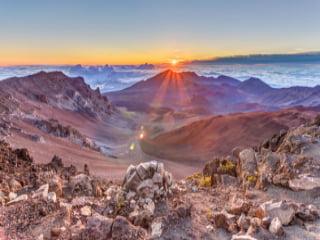
The crater at the top of the mountain is absolutely gorgeous, and it’s still technically active as a volcano. But don’t worry about an eruption. The last one took place between 1480 and 1600.
Haleakala is not a reliable place to catch a glimpse of molten rock, but it is a stunningly beautiful place nonetheless. The sleepy crater is a moonscape of colorful volcanic rock where oranges, purples, and reds glow at sunset or sunrise. And, during your visit, you walk around inside what is still technically an active volcano which is quite a brag-worthy experience.
As an added bonus, you can join a tour up to the crater. After enjoying the otherworldly landscape, you’ll be put on a bike to cruise down the long, slow slopes of the mountain back to town. It’s a refreshing, beautiful and exhilarating experience.
Can You Visit During An Eruption?
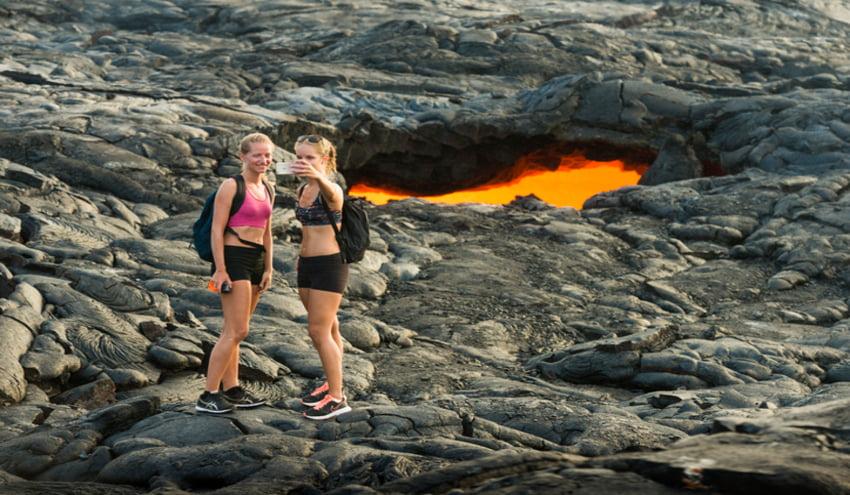
The main hazards during an eruption are the newly formed lava flows, which can tear through small towns, and air pollution. The air pollution is called volcanic fog, or “vog.” This vog can significantly affect the air quality on all of the Hawaiian islands.
Vog has a very peculiar look. It appears to be smog, but it carries a distinctive red hue. This shade of red can make the sun appear to be red, as well. And, of course, it carries a burned smell on the humid air.
Vog will carry downwind from the eruption, and the Big Island has distinctive east to northeast wind patterns. So the foggiest areas on the island will be to the south or southwest of the eruption site.
This air pollution can make it difficult or impossible for planes to land or take off from The Big Island if the eruption is large enough. Although, these vog groundings are rare. Kilauea’s last eruption, in May of 2018, put airlines on “red alert” but did not disrupt air traffic. You have to look all the way back to 2010 when a volcano erupted in Iceland which grounded planes throughout Europe for two weeks to see the last time vog affected air traffic.
However, the air pollution caused by volcanic eruption can cause some health problems. Older adults, young children, expectant mothers, people with asthma and cardiovascular disease are cautioned to stay away from voggy areas. The vog can increase your chances of respiratory ailments while causing a scratchy throat, eye, nose and skin irritation, coughing, phlegm, chest tightness, shortness of breath, fatigue, and dizziness.
But the Big Island is big. You’ll be able to avoid the affected areas quite easily while enjoying some clean air. The eruption will just make some of the island off-limits during your stay.
Related Pages
This is the perfect place for locals and tourists to grab some fresh seafood, a perfectly cooked steak, a refreshing salad or a filling ...
Top 10 Restaurants on The Big Island
Mauna Kea, Mauna Loa and Kilauea can erupt at any moment to send volcanic ash into the sky.
Are There Any Safety or Health Hazards in Hawaii?
And Hawaii is a quirky cultural mashup of Native, Asian, Portuguese and American cultures. You'll find strange collisions of cuisine on the ...
20 Coolest Facts You Didn't Know About Hawaii
Encircling the massive Haleakala volcano is the Road to Hana. This world-famous attraction takes you along the east coast of the island to a myriad .....
The Ultimate Maui Travel Guide
App tours give you access to the best guided tours — complete with activities, interesting trivia, and recommended stops.
Shaka Guide versus GyPSy Guide: Your Virtual Hawaiian Travel Experience
The Big Island has five active volcanoes. The two most noticeable are Mauna Kea and Mauna Loa simply due to their size.
The Ultimate Big Island Travel Guide
If you've never been to Hawaii before... go to Oahu or Maui. These well-trafficked islands will help you get your bearings in the Aloha ...
Which Island Should I Visit In Hawaii?
As you can see, the islands are very different from one another. Each is a tropical paradise, but each offers its own unique experiences.
What Island Fits Your Personality Best?
The Road to Hana is FILLED with one incredible distraction after another! Waterfalls and banyan trees, bamboo forests and black sand beaches.
Road to Hana
Hawaii is one of the hottest destinations for vacations, honeymoons, and business trips, but what is there to do, once you get there?
Top 10 things to do on The Big Island
In the same manner, even if you're already well-traveled, there are things that you must know and must NOT DO to avoid similar embarrassments while in...
40 Must NOT Be Done Things While in Hawaii
Subscribe to get our itinerary travel booklet., hawaiian planner provide cool tips, freebies and other useful resources., we use cookies in the delivery of our online services..
To learn about the cookies we use and information about your preferences and opt-out choices, please review our Privacy Policy here . Our Terms and Conditions, which contain an arbitration provision, may be viewed here . By using our application you agree to our Terms and Conditions and Privacy Policy , including the transfer of your personal data to the United States from your country of residence (if different).
Already have an account?
Sign up for free account.
Login with Facebook or Google
Don't have an account?
Welcome back sign in to hawaiian planner.
Login with Facebook

An official website of the United States government
Here’s how you know
Official websites use .gov A .gov website belongs to an official government organization in the United States.
Secure .gov websites use HTTPS A lock ( Lock A locked padlock ) or https:// means you’ve safely connected to the .gov website. Share sensitive information only on official, secure websites.
https://www.nist.gov/news-events/news/2024/04/moonlight-measurement-hawaiian-volcano
Moonlight Measurement on a Hawaiian Volcano
For several years, a team of researchers from the National Institute of Standards and Technology (NIST) has been building a robotically operated moonlight measurement installation on NOAA’s Mauna Loa Observatory (MLO) in Hawaii. The purpose of the installation is to measure the Moon’s reflectance better than ever before. These measurements will improve the accuracy of satellite imagery used to observe weather patterns, track trends in crop health, and monitor deforestation, snow cover, algal blooms in the ocean, and other global changes. But in November 2022, the Mauna Loa volcano erupted, taking out power lines and the access road that served the observatory. This video highlights the work to build the moonlight measurement installation up to the point of eruption. Photos and videos include striking phenomena such as puffed-up bags of chips at high altitude, a sundial with no shadow, anticrepuscular rays, and the nighttime glow of the volcanoes.
Tuesday, April 23, 2024 77° Today's Paper
Indonesians leave homes near erupting volcano
By Associated Press
April 18, 2024
- Share on Facebook
- Share by email

ASSOCIATED PRESS
Mount Ruang volcano is seen during the eruption from Tagulandang island, Indonesia.
MANADO, Indonesia >> Indonesian authorities closed an airport and residents left homes near an erupting volcano Thursday due to the dangers of spreading ash, falling rocks, hot volcanic clouds and the possibility of a tsunami.
Mount Ruang on the northern side of Sulawesi Island had at least five large eruptions Wednesday, causing the Center for Volcanology and Geological Disaster Mitigation to issue its highest-level alert, indicating an active eruption.
The crater emitted white-gray smoke continuously during the day Thursday, reaching more than 500 meters (1,600 feet) above the peak.
People have been ordered to stay at least 6 kilometers (3.7 miles) from the 725-meter (2,378 foot) mountain. More than 11,000 people live in the affected area and were told to leave. At least 800 have done so.
An international airport in Manado city was temporarily closed Thursday as volcanic ash was spewed into the air.
“We have to close flight operations at Sam Ratulangi Airport due to the spread of volcanic ash, which could endanger flight safety,” said Ambar Suryoko, head of the regional airport authority.
Eruptions Wednesday evening spewed volcanic ash approximately 70,000 feet into the atmosphere, according to the Australian Bureau of Meteorology’s Volcanic Ash Advisory Centre. The bureau said in a statement Thursday it was tracking and forecasting the ash dispersion.
Indonesia’s volcanology center noted the risks from the volcanic eruption include the possibility that part of the volcano could collapse into the sea and cause a tsunami. In December 2018, Indonesia’s Anak Krakatau volcano island erupted and collapsed, losing around 3/4 its volume and triggering a powerful tsunami that killed more than 400 people. An 1871 eruption at Mount Ruang also triggered a tsunami.
Tagulandang Island, east of the Ruang volcano, could be at risk if a collapse occurred. Its residents were among those being told to evacuate.
“People who live in the Tagulandang Island area and are within a 6-kilometer radius must be immediately evacuated to a safe place outside the 6-kilometer radius,” Abdul Muhari, spokesperson of the National Disaster Mitigation Agency, said Thursday. “And especially those who live near the coast should be aware of the potential for incandescent rocks to erupt, hot clouds and tsunami waves that could be triggered by the collapse of a volcanic body into the sea.”
The agency said residents will be relocated to Manado, the nearest city, on Sulawesi island — a six-hour journey by boat.
Indonesia, an archipelago of 270 million people, has 120 active volcanoes. It is prone to volcanic activity because it sits along the “Ring of Fire,” a horseshoe-shaped series of seismic fault lines around the Pacific Ocean.
Subscriber Favorites
Man lying on nuuanu ave. critically hurt after being struck by vehicle, hawaii businessman dennis mitsunaga to remain in jail during trial, state closes down resort restaurant at waikoloa due to rodents, citations issued for trespassing closed haiku stairs, city touts ‘sustainable’ projects near skyline, more world news.
North Korea’s Kim leads drills simulating nuclear counterattack
North Korea fires short-range missiles into the sea, Seoul says
Heavy rainstorms kill 4 people in southern China
Rivers recede but flooding plagues thousands in central Russia
Biden will send weapons to Ukraine once Senate OKs aid, Zelenskyy says
Looking back.

April 24, 2001: Hawaii public school teachers ratify contract, ending 19-day strike

IMAGES
VIDEO
COMMENTS
Embark on a one-day tour from Oahu to the Big Island to visit the most famous volcano of Hawaii, Kilauea Crater. All packages include round-trip airfare and a guided tour! Hawaii Volcanoes National Park offers a great way to experience the unique geological conditions of the Hawaii and welcomes visitors of all ages.
Have a Plan B before you visit. If there's an eruption, expect increased waits and congestion; consider visiting before sunrise or after sunset for a smoother experience. Visit the Kahuku Unit. Kahuku is never crowded, and open Thursday through Sunday, 8 a.m. to 4 p.m. Kahuku is located on Highway 11 near mile marker 70.5 in Ka'ū ...
Hawai'i Volcanoes National Park protects some of the most unique geological, biological, and cherished cultural landscapes in the world. Extending from sea level to 13,680 feet, the park encompasses the summits of two of the world's most active volcanoes - Kīlauea and Mauna Loa - and is a designated International Biosphere Reserve and UNESCO World Heritage Site.
Diamond Head State Monument on Oahu, a volcanic tuff cone, emerged around 300,000 years ago, featuring a distinctive circular crater. The iconic hike to the summit takes visitors through historic tunnels and bunkers, offering panoramic views of Honolulu, Waikiki, and the Pacific Ocean. Built in the early 1900s, bunkers and observation stations ...
Hawaii Volcanoes National Park is a natural marvel, boasting two of the planet's most active volcanoes - Kilauea and Mauna Loa. The park offers visitors an unrivaled opportunity to observe geological wonders in real-time. Situated on Hawaii's Big Island, this expansive national treasure spans over 333,000 acres from sea level to Mauna Loa's ...
Unsurprisingly, Hawaiʻi Volcanoes National Park on Hawaiʻi Island is one of the state's most popular attractions. This incredible landscape is home to two massive volcanoes - Kīlauea being one of the world's most active - and stretches from sea level to the summit of Mauna Loa, one of the world's largest. Sprawling across 333,259 ...
Diamond Head is a volcanic cone with highest vertical height reaching 762 feet (232.3 meters) into the Honolulu sky. The crater is 3,520 feet in diameter, encompassing 350 acres of space. Diamond head is located in the Hawaiian Islands on the island of Oahu near Waikiki, and overlooking the Pacific Ocean. It is part of the Hawaiian Islands ...
Book an Oahu Volcano Tour Today. In less than 60 minutes, an Oahu volcano tour by helicopter will introduce you to some of the island's most awe-inspiring volcanic landscapes, which include the Diamond Head Crater, the Koko Crater, Hanauma Bay, the Makapu'u Point Lighthouse, the Waianae Range, and much more. Book your tour today with ...
Kilauea: One of two volcanoes in Hawaii Volcanoes National Park. Be ready for rain, mist, and fog. You'll be at a 4,000-foot elevation so a rain jacket and even some warm clothing is a great idea. In fact, the summit can be 12 - 15 degrees cooler than sea level. Mauna Loa: The second volcano in the park and the largest volcano on Earth ...
Descend 400 feet (122 m) through rainforest into a volcanic crater and hike across a hardened lava lake from the 1959 eruption.
Hawaiʻi's Active Volcanoes. Two of the world's most active volcanoes - Kīlauea and Maunaloa - can be found on Hawaiʻi Island. Other volcanoes on Hawaiʻi Island include: Maunakea, Hualālai, and Kohala. Other landmark volcanoes in the State include: Lēʻahi (Lēʻahi Head), Oʻahu and Haleakalā, Maui. "Tip 10: Donate until it feels good!
Its sister volcano, Mauna Loa, which last erupted in 1984, is Earth's most massive mountain, measuring 80,000 cubic kilometers when including the part of the mountain below sea level. Start your journey on the island of Oahu in Honolulu, Hawaii's state capital and largest city. The cosmopolitan oceanfront setting has much to offer.
Volcano tours from Oahu include round-trip air travel from Honolulu to Hilo and fully guided experiences in Hawaii Volcanoes National Park. Tours from Oahu. $804.00; Oahu to Hilo: Helicopter & Volcano Adventure Tour ... The key to an enjoyable visit to the Big Island volcanoes is to go for the volcanoes and consider any sighting of lava as a ...
Hawaii Volcanoes National Park and Hilo Highlights (5.5 hours) Elite Volcano Hike From Hilo (9 hours) Best Tours from Kona to Hawaii Volcanoes NP: Volcanoes National Park and Kona Coffee Farm (12 hours) Big Island Twilight Volcano and Stargazing Tour (10am until 11pm) Additional options for renting a car:
Volcanoes. Although Hawaii is home to some of the world's largest and most active volcanoes, those on Oahu are neither. The city is home to the Diamond Head crater, a former volcano that has been ...
Diamond Head, a volcanic formation on Oahu Island in Hawaii, stands as the most frequented park in the state. In the 1800s, British soldiers mistook beachside calcite crystals for diamonds, hence the name. The site, also known as Diamond Head Lookout, provides breathtaking views of the Pacific Ocean and Honolulu, accessible via a trail leading ...
Many of Honolulu's most iconic landmarks were created by Ko'olau's Honolulu Volcanics. These icons include Leahi (Diamond Head), Koko Crater, Punchbowl, Mañana Island, and Hanauma Bay, among others. Of these, Leahi is among the oldest, dating back as much as 520,000 years. Hanauma Bay is the youngest formation, at anywhere from 70,000 to ...
Information Central. Kīlauea Visitor Center is often a great first stop when entering the park. Rangers and volunteers are on duty daily to provide visitors with the latest information on the current conditions, hiking information, things to do and the daily schedule of ranger-led activities. The Hawai'i Pacific Parks Association operates a ...
With Mauna Loa, the largest active volcano in the world, erupting, some travelers may be wondering if they can still visit Hawaii. If you're planning a trip to Hawaii, the short answer is there's ...
The Big Island's volcanoes include Mauna Kea, Mauna Loa, Hualalai, and Loihi. The massive mountains that mark the Big Island are still active volcanoes, though the activity is fairly rare. Mauna Loa last erupted in 1984, and the eruption lasted for 22 days.
Dormant Volcanoes in Hawaii: The 3 Best Volcanoes to See on Oahu. 1. Diamond Head. Known as Lë'ahi to Native Hawaiians, this nationally designated landmark towers over the Waikiki strip and is one of the most recognizable sites in the state: Directions: Diamond Head Crater and its visitor center are located in Honolulu, HI 96815.
To calibrate these satellite cameras, scientists need to know how much sunlight the Moon reflects. For years, NIST researchers worked to build a robotically operated moonlight measurement installation on NOAA's Mauna Loa Observatory (MLO) in Hawaii — until November 2022, when the Mauna Loa volcano erupted. Credit: Jennifer Lauren Lee/NIST
Travel. Arts & Entertainment; Columnists; Live Well; ... Tagulandang Island, east of the Ruang volcano, could be at risk if a collapse occurred. ... Honolulu, HI 96813 Telephone: 808-529-4747